
Cook's First Voyage
First voyage of captain james cook.
(1768 - 1771)
James Cook’s first voyage circumnavigated the globe in the ship Endeavour , giving the botanists Joseph Banks and Daniel Solander the opportunity to collect plants from previously unexplored habitats. Although the Endeavour voyage was officially a journey to Tahiti to observe the 1769 transit of Venus across the sun, it also had a more clandestine mission from the Royal Society to explore the South Pacific in the name of England. The two botanists on the expedition returned with a collection of plant specimens including an estimated 100 new families and 1,000 new species of plants, many of which are currently housed in the U. S. National Herbarium.
Joseph Banks, who would later become Sir Joseph Banks and president of the Royal Society, was a wealthy young scientist. He invited his close friend Daniel Solander, a Swedish student of Linnaeus working in the natural history collections of the British Museum, to join him on the Endeavour expedition. Together they acted as the naturalists on the voyage, commanding several servants and artists, including Sydney Parkinson, and outfitted with an excellent array of scientific equipment. After setting out from London, the expedition stopped briefly at Madeira, a small Portuguese island in the Atlantic Ocean, and then continued on to Rio de Janiero, on the eastern coast of Brazil. Here, the expedition encountered one of its first major setbacks when the Portuguese governor Dom Antonio Rolim de Moura Tavare refused to allow anyone from the Endeavour to come on land except to acquire necessities. This restriction, however, didn’t stop the two determined botanists. Banks and Solander risked being arrested as spies or smugglers in order to sneak onshore to collect specimens around the city. Despite this difficulty, the expedition traveled on to Tierra del Fuego at the southern tip of South America, where they collected a large number of specimens despite bitterly cold weather that killed two members of the crew. In April of 1769, the expedition reached Tahiti, where they stayed until July. During this time, Banks and Solander collected over 250 plant species, including the orchids Liparis revoluta and Oberonia equitans (also known as Oberonia disticha ) and the flowering plant Ophiorrhiza solandri , in the first extensive botanical study in Polynesia.
After viewing the transit of Venus on June 3, 1769, the expedition began mapping, exploring, and collecting specimens in the relatively unknown regions of New Zealand and the eastern coast of Australia (then called New Holland). Plants collected included the large orchid Dendrobium cunninghamii , also known as Winika cunninghamii , native to the western shore of New Zealand, as well as white-honeysuckle ( Banksia integrifolia ), native to the east coast of Australia. The Endeavour stopped for nine days at a bay on the coast of Australia, where, according to Banks, the expedition’s plant collection became “so immensely large that it was necessary that some extraordinary care should be taken of them least they should spoil.” The botanists were so successful that Cook decided to name the place Botany Bay in honor of their extensive discoveries.
The Endeavour continued its voyage mapping the eastern coast of Australia, narrowly avoiding shipwreck on the Great Barrier Reef, until it re-entered known waters near New Guinea in late August, 1770. During the last part of the voyage, the Endeavour stopped at the disease-ridden city of Batavia in Java and at the Cape of Good Hope in Africa, returning to England in July, 1771. Overall, the expedition was very successful, with little strife among the crew and no deaths from scurvy. Although neither Banks nor Solander published their botanical findings, the two naturalists returned to England with a vast wealth of new discoveries.
References:
Adams, Brian. The Flowering of the Pacific . Sydney: William Collins Pty, 1986. Allen, Oliver E. The Pacific Navigators . Canada: Time-Life Books, 1980. Global Biodiversity Information Facility (GBIF) database, http://gbif.org/ (for information on plant species Dendrobium cunninghamii ; accessed June 15, 2010). Ebes, Hank. The Florilegium of Captain Cook’s First Voyage to Australia: 1768-1771 . Melbourne: Ebes Douwma Antique Prints and Maps, 1988. Encyclopedia of Life (EOL) database, http://www.eol.org/ (for information on plant species Oberonia disticha and Dendrobium cunninghamii ; accessed June 15, 2010). Merrill, Elmer Drew. The Botany of Cook’s Voyages and its Unexpected Significance in Relation to Anthropology, Biogeography and History . Waltham, Massachusetts: Chronica Botanica Co., 1954. O’Brian, Patrick. Joseph Banks: A Life . Boston: David R. Gardine, Publisher, 1993. Rauchenberg, Roy A. “Daniel Carl Solander: Naturalist on the ‘Endeavour’,” Transactions of the American Philosophical Society , New Series, 58, no. 8 (1968): 1-66. http://www.jstor.org/stable/1006027 (May 26, 2010). National Library of Australia. “South Seas: Voyaging and Cross-Cultural Encounters in the Pacific.” South Seas , n.d. http://southseas.nla.gov.au/ . Contains maps and text of expedition journals by James Cook and Joseph Banks. USDA PLANTS database. United States Department of Agriculture, Natural Resources Conservation Service. National Plant Data Center. http://plants.usda.gov/ (for information on plant species Banksia integrifolia ; accessed June 15, 2010).
- Smithsonian Institution
- Terms of Use
- Privacy Policy
- Host an Event
Have Fun With History
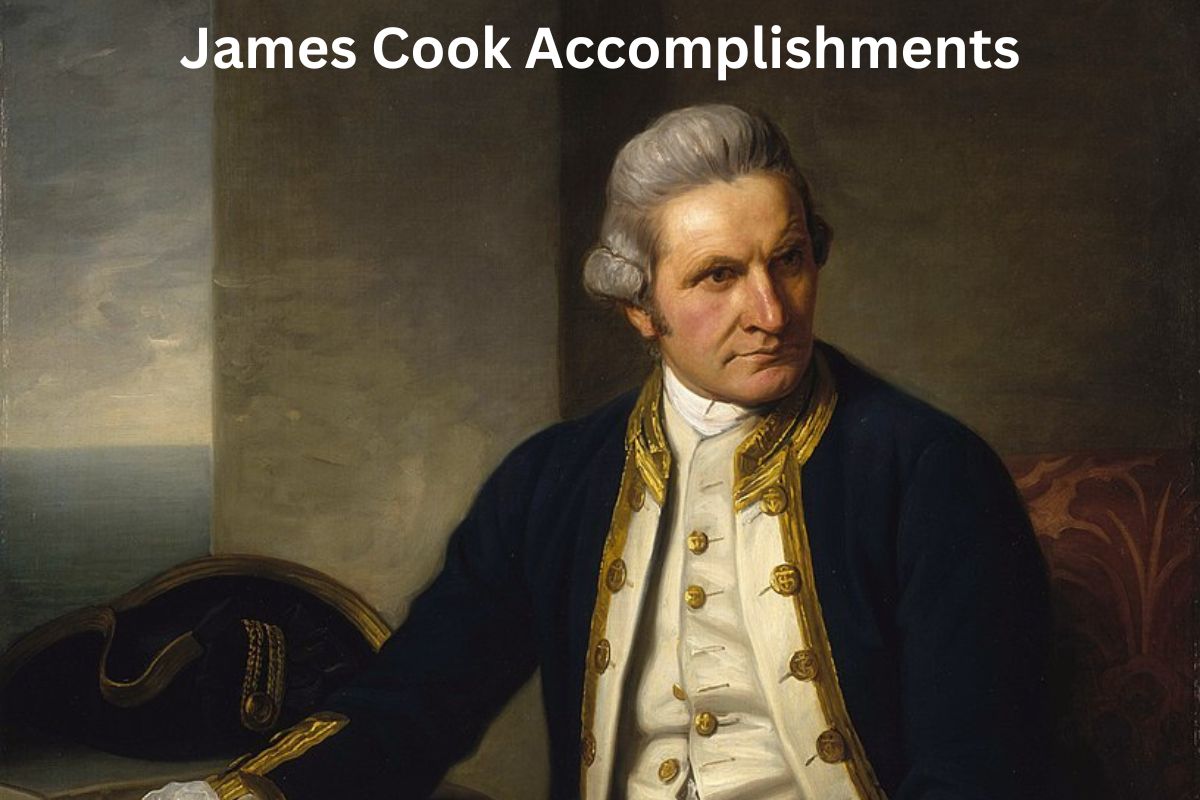
10 James Cook Accomplishments and Achievements
James Cook was a renowned British explorer and navigator who lived from 1728 to 1779. He made significant contributions to geographical discovery and scientific exploration during the 18th century.
Cook is best known for his voyages that led to the mapping and exploration of the east coast of Australia, the discovery and mapping of New Zealand, and extensive exploration of the Pacific Ocean.
His meticulous documentation, accurate mapping, and scientific observations greatly expanded European knowledge of the Pacific region, including its islands, cultures, and natural phenomena.
Cook’s legacy extends beyond exploration, as he introduced preventative measures against scurvy and his voyages laid the foundation for advancements in navigation and scientific exploration. James Cook remains an influential figure in the history of exploration and a symbol of discovery and adventure.
Accomplishments of James Cook
1. charting the east coast of australia.
James Cook’s first voyage, which took place from 1768 to 1771, was primarily focused on observing the transit of Venus across the sun. However, Cook was also tasked with exploring and charting the largely unknown eastern coastline of the continent we now know as Australia.
Also Read: Facts About James Cook
Cook and his crew meticulously surveyed the coast, producing detailed maps and charts of the region. His exploration led to the discovery and naming of many prominent landmarks, including Botany Bay, where the first European settlement in Australia was later established.
Cook’s thorough mapping of the east coast provided invaluable information for future explorers and ultimately paved the way for the British colonization of Australia.
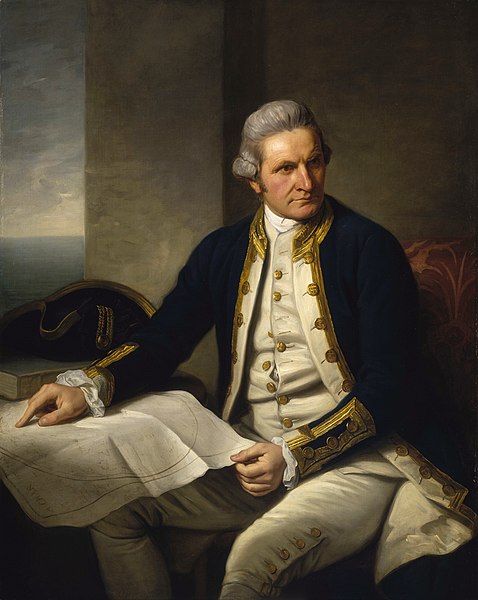
2. Discovering and mapping New Zealand
During his first voyage, Cook became the first European to accurately map the entire coastline of New Zealand. His ship, the HMS Endeavour, arrived in New Zealand in October 1769, and Cook spent several months circumnavigating both the North and South Islands.
He meticulously surveyed and charted the coastline, producing highly accurate maps that improved European understanding of the islands’ geography. Cook’s encounters with the indigenous Māori people were recorded in his journals and provided important insights into their customs and way of life.
Cook’s exploration of New Zealand remains significant to this day, and his maps formed the foundation for subsequent European settlement and navigation in the region.
3. Exploring the Pacific Ocean and mapping numerous islands
James Cook’s voyages took him across vast stretches of the Pacific Ocean, during which he explored and mapped numerous islands and archipelagos. His first voyage, as mentioned earlier, involved sailing through the Pacific to reach New Zealand and Australia.
Cook’s second voyage, from 1772 to 1775, focused on further exploration of the Pacific. He discovered and charted the Society Islands (including Tahiti), the Marquesas Islands, Tonga, and the Cook Islands, among others. His meticulous mapping and descriptions of these islands greatly expanded European knowledge of the Pacific region.
Cook’s third voyage, from 1776 to 1780, aimed to locate a rumored southern continent, but he instead crossed the Antarctic Circle and made significant progress in mapping the Southern Ocean. His exploration of the Pacific Ocean opened up new horizons and contributed to a deeper understanding of the world’s geography.
4. Accurate measurement of longitude at sea
One of the most significant contributions of James Cook’s voyages was his work on accurately measuring longitude at sea. Determining longitude was a pressing problem for navigators at the time, as it was crucial for accurate navigation and avoiding hazards.
Cook employed the use of newly developed marine chronometers, particularly the timepiece created by John Harrison, known as the H4 chronometer. These chronometers provided a reliable means of measuring time at sea, enabling sailors to determine their longitude by comparing local time with the time at a known reference point.
Cook’s meticulous implementation of these chronometers and his emphasis on precise timekeeping greatly improved navigation accuracy and facilitated safer and more efficient long-distance voyages.
5. Crossing the Antarctic Circle three times
During his second voyage (1772-1775), James Cook ventured farther south than any previous explorer at the time. He crossed the Antarctic Circle three times, making significant progress in exploring the Southern Ocean and pushing the boundaries of Antarctic exploration.
Although Cook did not directly encounter the Antarctic continent itself, his voyages expanded knowledge of the icy conditions and introduced European explorers to the harsh environment of the southern polar region.
Cook’s courage and determination in exploring these extreme latitudes paved the way for future Antarctic expeditions and contributed to our understanding of the Earth’s geography.
6. Discovering the Great Barrier Reef
In 1770, during his first voyage, James Cook’s ship, the HMS Endeavour, ran aground on the Great Barrier Reef off the coast of present-day Queensland, Australia. This event led to the discovery of the world’s largest coral reef system, stretching over 2,300 kilometers (1,400 miles).
Despite the challenges and damage to the ship, Cook and his crew spent several weeks repairing the vessel while also taking the opportunity to study and document the unique marine life and ecosystems of the reef.
Cook’s observations and meticulous charts of the Great Barrier Reef significantly expanded European knowledge of coral reefs and their ecological importance.
Today, the Great Barrier Reef remains a UNESCO World Heritage site and stands as one of the world’s most extraordinary natural wonders, thanks in part to Cook’s accidental discovery.
7. Documenting Pacific cultures and peoples
Throughout his voyages, James Cook and his crew had extensive interactions with the indigenous peoples of the Pacific islands they encountered. Cook had a keen interest in understanding the social, cultural, and linguistic aspects of the Pacific cultures.
He and his crew made detailed observations, recorded their encounters, and documented various aspects of the local customs, traditions, and languages. Cook’s journals and the accounts of his crew provide invaluable ethnographic records of Pacific islanders during the 18th century.
These records have been of great historical and anthropological importance, offering insights into the diverse cultures and societies of the Pacific that might otherwise have been lost to history.
8. Voyage to the Antarctic and venturing farther south than any previous explorer
During his third and final voyage (1776-1780), James Cook set sail with the objective of locating a southern continent, often referred to as “Terra Australis.”
Although he did not discover the fabled continent, Cook made significant progress in exploring the Southern Ocean and became the first recorded person to cross the Antarctic Circle in the Southern Hemisphere. His ships penetrated further south than any previous expedition, reaching approximately 71°10’S latitude.
Cook’s voyage to the Antarctic, although focused on geographical exploration, also added to scientific knowledge about the extreme environment of the polar region and the challenges of navigating icy waters.
9. Introduction of preventative measures against scurvy
Scurvy, a disease caused by vitamin C deficiency, plagued sailors on long voyages during Cook’s era. Recognizing the importance of maintaining the health of his crew, Cook implemented strict measures to combat scurvy during his voyages.
He emphasized cleanliness, proper ventilation, and the provisioning of a balanced diet that included fresh foods rich in vitamin C, such as citrus fruits and sauerkraut. These measures significantly reduced the incidence of scurvy among Cook’s crew compared to other contemporary naval expeditions.
Cook’s emphasis on maintaining crew health and his success in preventing scurvy contributed to improved conditions and increased survival rates on long sea voyages, leading to advancements in naval and maritime exploration.
10. Legacy of scientific exploration and expanding knowledge in various fields
James Cook’s voyages had a lasting impact on scientific exploration and knowledge across various fields. Cook and his crew conducted extensive botanical studies, collecting and documenting numerous plant specimens from the Pacific islands they visited.
These botanical collections contributed to advancements in the study of plant taxonomy and provided a wealth of information about previously unknown species. Cook also made significant contributions to geology, mapping coastlines and recording geological formations.
Additionally, his observations of celestial bodies, such as the transit of Venus, and his meticulous navigation techniques improved the accuracy of astronomical and navigational calculations.
Cook’s commitment to scientific inquiry and his comprehensive documentation of natural phenomena paved the way for further scientific exploration and greatly expanded knowledge in the fields of botany, geology, astronomy, and ethnography. His legacy continues to inspire and inform scientific endeavors to this day.
Captain Cook’s 1768 Voyage to the South Pacific Included a Secret Mission
The explorer traveled to Tahiti under the auspices of science 250 years ago, but his secret orders were to continue Britain’s colonial project
/https://tf-cmsv2-smithsonianmag-media.s3.amazonaws.com/accounts/headshot/lorraine.png)
Lorraine Boissoneault
/https://tf-cmsv2-smithsonianmag-media.s3.amazonaws.com/filer/26/64/2664d6d3-014a-44a5-8058-cdad709bacca/captainjamescookportrait.jpg)
It was 1768, and the European battle for dominance of the oceans was on. Britain, France, Spain, Portugal and the Netherlands had already spent several centuries traversing the globe in search of new land to conquer and resources to exploit, but the Pacific—and specifically, the South Seas—remained largely unknown. In their race to be the first to lay claim to new territory, the British government and the Royal Navy came up with a secret plan: Send a naval officer on a supposedly scientific voyage, then direct him to undertake a voyage of conquest for the fabled Southern Continent. The man chosen for the job was one James Cook, a Navy captain who also had training in cartography and other sciences.
Europeans already knew the Pacific had its share of islands, and some of them held the potential for enormous wealth. After all, Ferdinand Magellan became the first European to cross the Pacific Ocean way back in 1519, and by then it was already known that the “Spice Islands,” (in modern-day Indonesia) were located in the Pacific. Magellan was followed by a dozen other Europeans—especially Dutch and Spanish captains—over the next two centuries, some of them sighting the western shores of Australia, others identifying New Zealand. But the vastness of the Pacific Ocean, combined with the unreliability of maps, meant no one was sure whether the Southern Continent existed or had been discovered.
Even among the British, Cook wasn’t the first to set his sights on the South Pacific. Just a year earlier, Captain Samuel Wallis piloted the ship Dolphin to make first landing on Tahiti, which he christened George III Island. As for the British government, they had publicized their interest in the region since 1745, when Parliament passed an act offering any British subject a reward of £20,000 if they found the fabled northwest passage from Hudson Bay in North America to the Pacific. The British government wasn’t alone in its imperialist interests; the Dutch explorer Abel Tasman had already sighted an island off the south coast of Australia that would later be named after Tasmania him, and the Spanish had built fortifications on the Juan Fernández Islands off the west coast of Chile.
“For the Spaniards to fortify and garrison Juan Fernández meant that they intended to try to keep the Pacific closed,” writes historian J. Holland Rose . “The British Admiralty was resolved to break down the Spanish claim.”
But to do so without drawing undue attention to their goals, the Admiralty needed another reason to send ships to the Pacific. The Royal Society presented the perfect opportunity for just such a ruse. Founded in 1660 , the scientific group was at first little more than a collection of gentlemen with the inclination and resources to undertake scientific projects. As historian Andrew S. Cook (no apparent relation) writes , “The Society was in essence a useful vehicle for government to utilize the scientific interests of individual fellows, and for fellows to turn their scientific interests into formal applications for government assistance.” When the Royal Society approached the Navy, requesting they send a ship to Tahiti to observe the transit of Venus that would occur in 1769, it probably seemed like the perfect cover, Cook the scholar says.
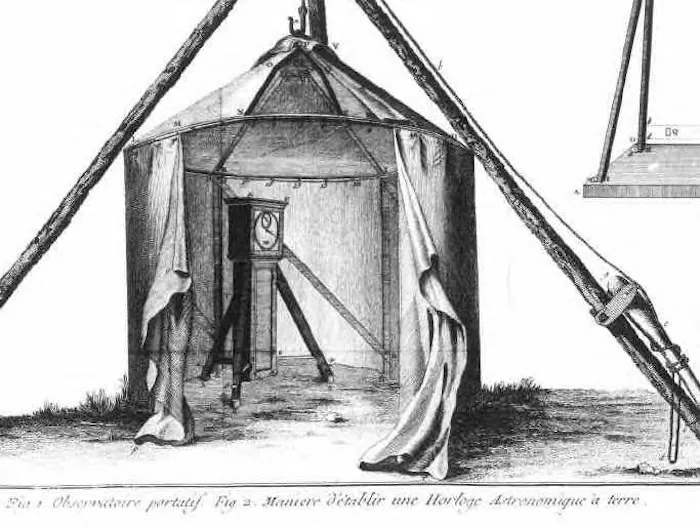
The 1769 transit of Venus was the mid-18th-century version of the mania surrounding last year’s solar eclipse. It was one of the most massive international undertakings to date. Captain Cook’s crew, complete with astronomers, illustrators and botanists, was one of 76 European expeditions sent to different points around the globe to observe Venus crossing the sun. Scientists hoped that these measurements would help them quantify Earth’s distance from the sun and extrapolate the size of the solar system. The rare event was deemed so important that the French government, fresh off fighting the Seven Years’ War (French and Indian War) with England, issued an instruction to its war ships not to harass Cook. It wasn’t an undue precaution; French astronomer Guillaume Le Gentil traveled to India to observe the 1761 transit of Venus but ultimately missed the event because his ship had to outrun English men-of-wars, according to historian Charles Herdendorf .
Captaining the Endeavour , Cook departed from Plymouth 250 years ago on August 26, 1768, in order to arrive in Tahiti on time for the transit, which would happen on June 3, 1769. His path carried him across the Atlantic and around the difficult-to-traverse Cape Horn in South America toward the south Pacific. He carried with him sealed secret instructions from the Admiralty, which he’d been ordered not to open until after completing the astronomical work. Unfortunately for the scientists, the actual observations of the transit at points around the world were mostly useless. Telescopes of the period caused blurring around the planet that skewed the recorded timing of Venus passing across the sun.
But for Cook, the adventure was just beginning. “Cook left no record of when he opened the sealed packet of secret orders he’d been given by the Admiralty,” writes Tony Horwitz in Blue Latitudes: Boldly Going Where Captain Cook Has Gone Before . “But on August 9, 1769, as he left Bora-Bora and the other Society Isles behind, Cook put his instructions into action. ‘Made sail to the southward,’ he wrote, with customary brevity.”
The gist of those instructions was for Cook to travel south and west in search of new land—especially the legendary “Terra Australis,” an unknown continent first proposed by Greek philosophers like Aristotle, who believed a large southern continent was needed to balance out the weight of northern continents. In their instructions, the Royal Navy told Cook not only to map the coastline of any new land, but also “to observe the genius, temper, disposition and number of the natives, if there be any, and endeavor by all proper means to cultivate a friendship and alliance with them… You are also with the consent of the natives to take possession of convenient situations in the country, in the name of the King of Great Britain.”
Cook went on to follow those instructions over the next year, spending a total of 1,052 days at sea on this mission. He became the first European to circumnavigate and meticulously chart the coastline of New Zealand’s two islands, and repeatedly made contact with the indigenous Maori living there. He also traveled along the east coast of Australia, again becoming the first European to do so. By the time he and his crew (those who survived, anyway) returned to England in 1771, they had expanded the British Empire’s reach to an almost incomprehensible degree. But he hadn’t always followed his secret instructions exactly as they were written—he took possession of those new territories without the consent of its inhabitants, and continued to do so on his next two expeditions.
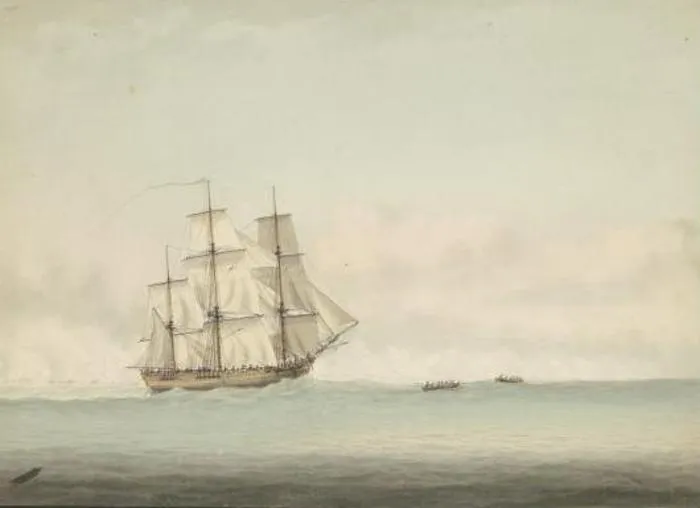
Even as he took control of their land, Cook seemed to recognize the indigenous groups as actual humans. On his first trip to New Zealand, he wrote , “The Natives … are a strong, well made, active people as any we have seen yet, and all of them paint their bod[ie]s with red oker and oil from head to foot, a thing we have not seen before. Their canoes are large, well built and ornamented with carved work.”
“It would be as wrong to regard Cook as an unwitting agent of British imperialism as [it would be] to fall into the trap of ‘judging him according to how we judge what happened afterwards,’” writes Glyndwr Williams . “His command of successive voyages indicated both his professional commitment, and his patriotic belief that if a European nation should dominate the waters and lands of the Pacific, then it must be Britain.”
But the toll of that decision would be heavy. Cook estimated the native population on Tahiti to be 204,000 in 1774. By the time the French took control of the territory and held a census in 1865, they found only 7,169 people of native descent . And as for the British Empire, the 1871 census found 234 million people lived in it—but only 13 percent were in Great Britain and Ireland, writes Jessica Ratcliff in The Transit of Venus Enterprise in Victorian Britain . From the Caribbean and South America to Africa to South Asia to now, thanks to Cook, Australia, the aphorism “the sun never sets on the British Empire” was borne. Cook’s expedition to conquer inhabited territory had repercussions for millions of people who would never actually see the nation who had claimed their homes.
For centuries, the myth of Cook’s voyage as an essentially scientific undertaking persisted, although plenty of people had already surmised the government's hand in Cook's journeys. Still, a full copy of the Admiralty’s “Secret Instructions” weren't made public until 1928. Today, Cook’s legacy is recognized more for what it was: an empire-building project dressed with the trappings of science.
Get the latest History stories in your inbox?
Click to visit our Privacy Statement .
/https://tf-cmsv2-smithsonianmag-media.s3.amazonaws.com/accounts/headshot/lorraine.png)
Lorraine Boissoneault | | READ MORE
Lorraine Boissoneault is a contributing writer to SmithsonianMag.com covering history and archaeology. She has previously written for The Atlantic, Salon, Nautilus and others. She is also the author of The Last Voyageurs: Retracing La Salle's Journey Across America. Website: http://www.lboissoneault.com/
We are building a new website. Try it now and give us your feedback. Explore the beta site.
James Cook and his voyages
The son of a farm labourer, James Cook (1728–1779) was born at Marton in Yorkshire. In 1747 he was apprenticed to James Walker, a shipowner and master mariner of Whitby, and for several years sailed in colliers in the North Sea, English Channel, Irish Sea and Baltic Sea. In 1755 he volunteered for service in the Royal Navy and was appointed an able seaman on HMS Eagle . Within two years he was promoted to the rank of master and in 1758 he sailed to North America on HMS Pembroke . His surveys of the St Lawrence River, in the weeks before the capture of Quebec, established his reputation as an outstanding surveyor. In 1763 the Admiralty gave him the task of surveying the coast of Newfoundland and southern Labrador. He spent four years on HMS Grenville , recording harbours and headlands, shoals and rocks, and also observed an eclipse of the sun in 1766.
First voyage
In May 1768 Cook was promoted to the rank of lieutenant and given command of the bark Endeavour . He was instructed to sail to Tahiti to observe the transit of Venus in 1769 and also to ascertain whether a continent existed in the southern latitudes of the Pacific Ocean. The expedition, which included a party of scientists and artists led by Joseph Banks, left Plymouth in August 1768 and sailed to Brazil and around Cape Horn, reaching Tahiti in April 1769. After the astronomical observations were completed, Cook sailed south to 40°S, but failed to find any land. He then headed for New Zealand, which he circumnavigated, establishing that there were two principal islands. From New Zealand he sailed to New Holland, which he first sighted in April 1770. He charted the eastern coast, naming prominent landmarks and collecting many botanical specimens at Botany Bay. The expedition nearly ended in disaster when the Endeavour struck the Great Barrier Reef, but it was eventually dislodged and was careened and repaired at Endeavour River. From there it sailed around Cape York through Torres Strait to Batavia, in the Dutch East Indies. In Batavia and on the last leg of the voyage one-third of the crew died of malaria and dysentery. Cook and the other survivors finally reached England in July 1771.
Second voyage
In 1772 Cook, who had been promoted to the rank of captain, led a new expedition to settle once and for all the speculative existence of the Great Southern Continent by ‘prosecuting your discoveries as near to the South Pole as possible’. The sloops Resolution and Adventure , the latter commanded by Tobias Furneaux, left Sheerness in June 1772 and sailed to Cape Town. The ships became separated in the southern Indian Ocean and the Adventure sailed along the southern and eastern coasts of Van Diemen’s Land before reuniting with the Resolution at Queen Charlotte Sound in New Zealand. The ships explored the Society and Friendly Islands before they again became separated in October 1773. The Adventure sailed to New Zealand, where 10 of the crew were killed by Maori, and returned to England in June 1774. The Resolution sailed south from New Zealand, crossing the Antarctic Circle and reaching 71°10’S, further south than any ship had been before. It then traversed the southern Pacific Ocean, visiting Easter Island, Tahiti, the Friendly Islands, New Hebrides, New Caledonia, Norfolk Island and New Zealand. In November 1774 Cook began the homeward voyage, sailing to Chile, Patagonia, Tierra del Fuego, South Georgia and Cape Town. The expedition reached England in July 1775.
Third voyage
A year later Cook left Plymouth on an expedition to search for the North West Passage. His two ships were HMS Resolution and Discovery , the latter commanded by Charles Clerke. They sailed to Cape Town, Kerguelen Island in the southern Indian Ocean, Adventure Bay in Van Diemen’s Land, and Queen Charlotte Sound in New Zealand. They then revisited the Friendly and Society Islands. Sailing northwards, Cook became the first European to travel to the Hawaiian Islands (which he named the Sandwich Islands), and reached the North American coast in March 1778. The ships followed the coast northwards to Alaska and the Bering Strait and reached 70°44’N, before being driven back by ice. They returned to the Sandwich Islands and on 14 February 1779 Cook was killed by Hawaiians at Kealakekua Bay. Clerke took over the command and in the summer of 1779 the expedition again tried unsuccessfully to penetrate the pack ice beyond Bering Strait. Clerke died in August 1779 and John Gore and James King commanded the ships on the voyage home via Macao and Cape Town. They reached London in October 1780.
Acquisition
The earliest acquisitions by the Library of original works concerning Cook’s voyages were the papers of Sir Joseph Banks and a painting of John Webber, which were acquired from E.A. Petherick in 1909. In 1923 the Australian Government purchased at a Sotheby’s sale in London the Endeavour journal of James Cook, together with four other Cook documents that had been in the possession of the Bolckow family in Yorkshire. The manuscripts of Alexander Home were purchased from the Museum Bookstore in London in 1925, while the journal of James Burney was received with the Ferguson Collection in 1970. A facsimile copy of the journal of the Resolution in 1772–75 was presented by Queen Elizabeth II in 1954.
The 18 crayon drawings of South Sea Islanders by William Hodges were presented to the Library by the British Admiralty in 1939. They had previously been in the possession of Greenwich Hospital. The view from Point Venus by Hodges was bought at a Christie’s sale in 1979. The paintings of William Ellis were part of the Nan Kivell Collection, with the exception of the view of Adventure Bay, which was bought from Hordern House in Sydney in 1993. The painting of the death of Cook by George Carter and most of the paintings of John Webber were also acquired from Rex Nan Kivell. The painting by John Mortimer was bequeathed to the Library by Dame Merlyn Myer and was received in 1987.
Description
Manuscripts.
The Endeavour journal of James Cook (MS 1) is the most famous item in the Library’s collections. It has been the centrepiece of many exhibitions ever since its acquisition in 1923, and in 2001 it became the first Australian item to be included on the United Nations Educational, Scientific and Cultural Organization’s (UNESCO’s) Memory of the World Register. While there are other journals of the first voyage that are partly in Cook’s hand, MS 1 is the only journal that is entirely written by Cook and covers the whole voyage of the Endeavour . The early entries in 1768, as the ship crossed the Atlantic Ocean, are brief but the passages describing Cook’s experiences and impressions in Tahiti, New Zealand and New South Wales in 1769–70 are very detailed. The journal, which is 753 pages in length, was originally a series of paper volumes and loose sheets, but they were bound into a single volume in the late nineteenth century. The current binding of oak and pigskin dates from 1976.
Two other manuscripts, also acquired in 1923, relate to the first voyage. The Endeavour letterbook (MS 2), in the hand of Cook’s clerk, Richard Orton, contains copies of Cook’s correspondence with the Admiralty and the various branches of the Navy Board. Of particular importance are the original and additional secret instructions that he received from the Lords of the Admiralty in July 1768. The other item (MS 3) is a log of the voyage, ending with the arrival in Batavia. The writer is not known, although it may have been Charles Green, the astronomer. Other documents concerning the voyage are among the papers of Joseph Banks (MS 9), including his letters to the Viceroy of Brazil in 1768 and the ‘Hints’ of the Earl of Morton, the president of the Royal Society.
The Library holds a facsimile copy (MS 1153) of the journal of HMS Resolution on the second voyage, the original of which is in the National Maritime Museum in London. It is in the hand of Cook’s clerk, William Dawson. It also holds the journal (MS 3244) of James Burney, a midshipman on HMS Adventure , covering the first part of the voyage in 1772–73. It includes a map of eastern Van Diemen’s Land and Burney’s transcription of Tongan music. In addition, there is a letterbook (MS 6) of the Resolution for both the second and third voyages. Documents of the third voyage include an account of the death of Cook (MS 8), probably dictated by Burney, and two manuscripts of Alexander Home (MS 690). They contain descriptions of Tahiti and Kamtschatka and another account of Cook’s death.
The earliest manuscript of Cook in the collection is his description of the coast of Nova Scotia, with two maps of Harbour Grace and Carbonere, dating from 1762 (MS 5). The Library holds original letters of Cook written to John Harrison, George Perry, Sir Philip Stephens and the Commissioners of Victualling. There is also in the Nan Kivell Collection a group of papers and letters of the Cook family, 1776–1926 (MS 4263).
MS 1 Journal of the H.M.S. Endeavour, 1768-1771
MS 2 Cook's voyage 1768-71 : copies of correspondence, etc. 1768-1771
MS 3 Log of H.M.S. Endeavour, 1768-1770
MS 5 Description of the sea coast of Nova Scotia, 1762
MS 6 Letterbook, 1771-1778
MS 8 Account of the death of James Cook, 1779
MS 9 Papers of Sir Joseph Banks, 1745-1923
MS 690 Home, Alexander, Journals, 1777-1779
MS 1153 Journal of H.M.S. Resolution, 1772-1775
MS 3244 Burney, James, Journal, 1772-1773
MS 4263 Family papers 1776-1926
Many records relating to the voyages of Cook have been microfilmed at the National Archives (formerly the Public Record Office) in London and other archives and libraries in Britain. They include the official log of HMS Endeavour and the private journals kept by Cook on his second and third voyages. The reels with the prefixes PRO or M were filmed by the Australian Joint Copying Project.
mfm PRO 3268 Letters of Capt. James Cook to the Admiralty, 1768–79 (Adm. 1/1609-12)
mfm PRO 1550–51 Captain’s log books, HMS Adventure , 1772–74 (Adm. 51/4521-24)
mfm PRO 1554 Captain’s log books, HMS Discovery , 1776–79 (Adm. 51/ 4528-9)
mfm PRO 1554 Captain’s log books, HMS Resolution , 1779 (Adm. 51/4529)
mfm PRO 1555–6 Captain’s log books, HMS Discovery , 1776–79 (Adm. 51/4530-1)
mfm PRO 1561–3 Captain’s log books, HMS Endeavour , 1768–71 (Adm. 51/4545-8)
mfm PRO 1565–70 Captain’s log books, HMS Resolution , 1771–79 (Adm. 51/4553-61)
mfm PRO 1572 Logbooks, HMS Adventure , 1772–74 (Adm. 53/1)
mfm PRO 1575–6 Logbooks, HMS Discovery , 1776–79 (Adm. 53/20-24)
mfm PRO 1580 Logbooks, HMS Endeavour , 1768–71 (Adm. 53/39-41)
mfm PRO 1590–4 Logbooks, HMS Resolution , 1771–80 (Adm. 53/103-24)
mfm PRO 1756 Logbook, HMS Adventure , 1772–74 (BL 44)
mfm PRO 1756 Observations made on board HMS Adventure , 1772–74 (BL 45)
mfm PRO 1756A Logbook, HMS Resolution , 1772–75 (BL 46)
mfm PRO 1756 Observations made on board HMS Resolution , 1772–75 (BL 47)
mfm PRO 1756 Journal of Capt. J. Cook: observations on variations in compass and chronometer rates, 1776 (BL 48)
mfm PRO 1756 Astronomical observations, HMS Resolution , 1778–80 (BL 49)
mfm PRO 4461–2 Ship’s musters, HMS Endeavour , 1768–71 (Adm. 12/8569)
mfm PRO 4462–3 Ship’s musters, HMS Adventure , 1769–74 (Adm. 12/7550)
mfm PRO 4463–4 Ship’s musters, HMS Resolution , 1771–75 (Adm. 12/7672)
mfm PRO 4464 Ship’s musters, HMS Discovery , 1776–80 (Adm. 12/8013)
mfm PRO 4464–5 Ship’s musters, HMS Resolution , 1776–80 (Adm. 12/9048-9)
mfm PRO 6119 Deptford Yard letterbooks, 1765-78 (Adm. 106/3315-8)
MAP mfm M 406 Charts and tracings of Australian and New Zealand coastlines by R. Pickersgill and Capt. James Cook, 1769–70 (Hydrographic Department)
mfm M 869 Letters of David Samwell, 1773–82 (Liverpool City Libraries)
mfm M 1561 Log of HMS Endeavour , 1768–71 (British Library)
mfm M 1562 Journal of Capt. Tobias Furneaux on HMS Adventure , 1772–74 (British Library)
mfm M1563 Drawings of William Hodges on voyage of HMS Resolution , 1772–74 (British Library)
mfm M 1564 Log of Lieut. Charles Clerke on HMS Resolution , 1772–75 (British Library)
mfm M 1565 Journal of Lieut. James Burney on HMS Discovery , 1776–79 (British Library)
mfm M 1566 Journal of Thomas Edgar on HMS Discovery , 1776–79
mfm M 1580 Journal of Capt. James Cook on HMS Resolution , 1771–74 (British Library)
mfm M 1580–1 Journal of Capt. James Cook on HMS Resolution , 1776–79 (British Library)
mfm M 1583 Journal of David Samwell on HMS Resolution and Discovery , 1776–79 (British Library)
mfm M 2662 Correspondence of Sir Joseph Banks, 1768–1819 (Natural History Museum)
mfm M 3038 Letters of Capt. James Cook, 1775–77 (National Maritime Museum)
mfm M 3074 Drafts of Capt. James Cook’s account of his second voyage (National Maritime Museum)
mfm G 9 Journal of voyage of HMS Endeavour , 1768–71 (National Maritime Museum)
mfm G 13 Journal of voyage of HMS Resolution , 1772–75 (National Maritime Museum)
mfm G 27412 Journal of Capt. James Cook on HMS Endeavour , 1768–70 (Mitchell Library)
The only manuscript maps drawn by Cook held in the Library are the two maps of Halifax Harbour, Nova Scotia, contained in MS 5. The map by James Burney of Van Diemen’s Land, contained in his 1773–74 journal, is the only manuscript map in the Library emanating from Cook’s three Pacific voyages.
On the first voyage most of the surveys were carried out by Cook himself, assisted by Robert Molyneux, the master, and Richard Pickersgill, the master’s mate. Cook produced some of the fair charts, but it seems that most were drawn by Isaac Smith, one of the midshipmen. After the voyage the larger charts were engraved by William Whitchurch and a number of engravers worked on the smaller maps. The Library holds nine maps (six sheets) and five coastal views (one sheet) published in 1773, as well as two French maps of New Zealand and New South Wales based on Cook’s discoveries (1774).
Cook and Pickersgill, who had been promoted to lieutenant, carried out most of the surveys on the second voyage. Others were performed by Joseph Gilbert, master of the Resolution , Peter Fannin, master of the Adventure , the astronomer William Wales and James Burney. Isaac Smith, the master’s mate, again drew most of the fair charts of the voyage and William Whitchurch again did most of the engravings. The Library holds 15 maps (10 sheets) published in 1777.
On the third voyage, Cook seems to have produced very few charts. Most of the surveys were carried out by William Bligh, master of the Resolution , and Thomas Edgar, master of the Discovery . Henry Roberts, the master’s mate and a competent artist, made the fair charts and after the voyage he drew the compilation charts from which the engraved plates were produced. Alexander Dalrymple supervised the engravings. The Library holds five maps and five coastal views published in 1784–86.
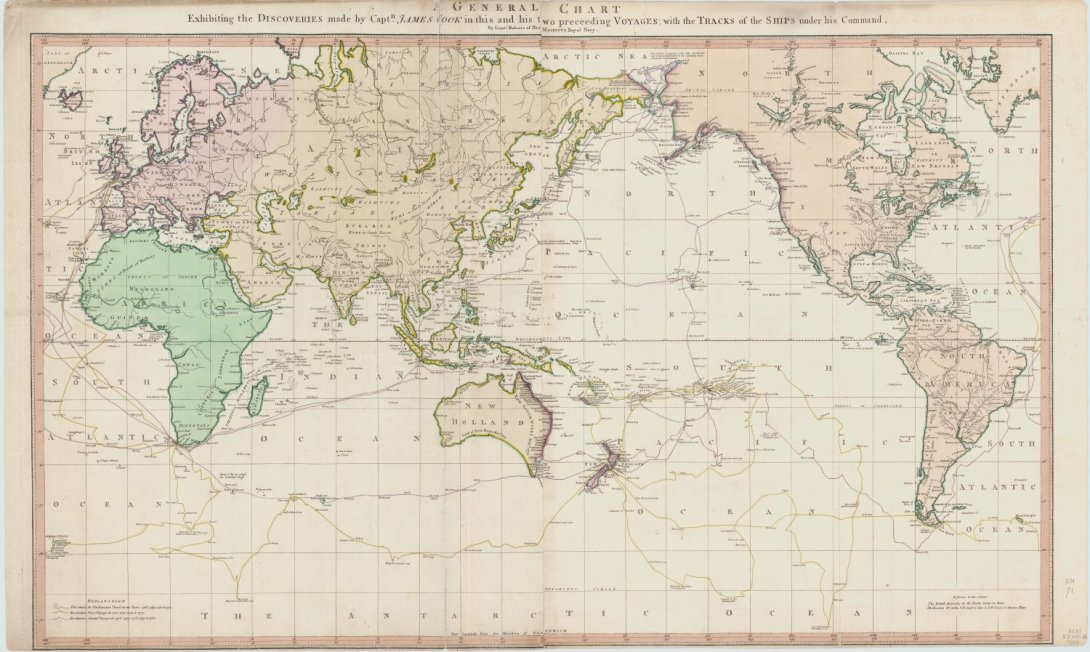
The Library holds a number of objects that allegedly belonged to Cook, such as a walking stick, a clothes brush and a fork. A more substantial artefact is a mahogany and rosewood fall-front desk that was believed to have been used by Cook on one of his voyages. Other association items are a compass, protractor, ruler and spirit level owned by Alexander Hood, the master’s mate on HMS Resolution in 1772–75.
Three of the medals issued by the Royal Society in 1784 to commemorate the achievements of Cook are held in the Library. Another medal issued in 1823 to commemorate his voyages is also held.
The Library has several collections of tapa cloth, including a piece of cloth and two reed maps brought back by Alexander Hood in 1774 and a catalogue of 56 specimens of cloth collected on Cook’s three voyages (1787).
Captain James Cook's walking stick
Clothes brush said to have been the property of Captain Cook
Captain James Cook's fork
Mahogany fall-front bureau believed to have been used by Captain Cook
Compass, protractor, ruler and spirit level owned by Alexander Hood
Commemorative medal to celebrate the voyages of Captain James Cook (1784)
Medal to commemorate the voyages of Captain Cook (1823)
Sample of tapa cloth and two reed mats brought back by Alex Hood
A catalogue of the different specimens of cloth collected in the three voyages of Captain Cook
The Library holds a very large number of engraved portraits of James Cook, many of them based on the paintings by Nathaniel Dance, William Hodges and John Webber. It also holds two oil portraits by unknown artists, one being a copy of the portrait by Dance held in the National Maritime Museum in London. Of special interest is a large oil painting by John Mortimer, possibly painted in 1771, depicting Daniel Solander, Joseph Banks, James Cook, John Hawkesworth and Lord Sandwich.
There were two artists on the Endeavour : Alexander Buchan, who died in Tahiti in 1769, and Sydney Parkinson, who died in Batavia in 1771. The Library has a few original works that have been attributed to Parkinson, in particular a watercolour of breadfruit, which is in the Nan Kivell Collection. In addition, there are a number of prints that were reproduced in the publications of Hawkesworth and Parkinson in 1773, including the interior of a Tahitian house, the fort at Point Venus, a view of Matavai Bay, Maori warriors and war canoes, mountainous country on the west coast of New Zealand, and a view of Endeavour River.
William Hodges was the artist on the Resolution in 1772–75. The Library holds an outstanding collection of 18 chalk drawings by Hodges of the heads of Pacific Islanders. They depict men and women of New Zealand, Tahiti, Tonga, New Caledonia, New Hebrides and Easter Island. Other works by Hodges include an oil painting of a dodo and a red parakeet, watercolours of Tahiti, Tonga and the New Hebrides, and an oil painting of Point Venus. There are also two pen and wash drawings of the Resolution by John Elliott, who was a midshipman on the ship. Among the prints of Hodges are other heads of Pacific Islanders, a portrait of Omai, the Tahitian who visited England in 1775–76, and views of Tahiti, New Caledonia, New Hebrides, Norfolk Island, Easter Island and Tierra del Fuego.
John Webber, who was on the Resolution in 1776–80, had been trained as a landscape artist in Berne and Paris. Another artist on the expedition was William Ellis, the surgeon’s mate on the Discovery , who was a fine draughtsman. The Library holds 19 of Webber’s watercolours, ink and wash drawings, crayon drawings and pencil drawings of views in Tahiti, the Friendly Islands, the Sandwich Islands, Alaska and Kamchatka. There are also oil portraits by Webber of John Gore and James King. Ellis is equally well represented, with 23 watercolours, ink drawings and pencil drawings of scenes in Kerguelen Island, New Zealand, Tahiti, Nootka Sound, Alaska and Kamchatka. Of particular interest is a watercolour and ink drawing by Ellis of the Resolution and Discovery moored in Adventure Bay in 1777, the earliest original Australian work in the Pictures Collection. The death of Cook is the subject of the largest oil painting in the Library’s collection, painted by George Carter in 1781.
Omai, the first Polynesian to be seen in London, was the subject of a number of portraits, included a celebrated painting by Sir Joshua Reynolds. The Library has a pencil drawing of Omai by Reynolds. A pantomime by John O’Keefe entitled Omai, or a Trip Round the World , enjoyed great success in London in 1785–86, being played more than 50 times. The Library holds a collection of 17 watercolour costume designs for the pantomime, drawn by Philippe de Loutherbourg and based mainly on drawings by Webber. The subjects include ‘Obereyaee enchatress’, ‘Otoo King of Otaheite’, ‘a chief of Tchutzki’ and ‘a Kamtchadale’.
Publications
Bibliography.
Beddie,M.K. (ed.), Bibliography of Captain James Cook, R,N., F.R.S., circumnavigator , Library of New South Wales, Sydney, 1970.
Original Accounts of the Voyages
Hawkesworth, John, An account of the voyages undertaken by the order of His Present Majesty, for making discoveries in the Southern Hemisphere, and successively performed by Commodore Byron, Captain Wallis, Captain Carteret, and Captain Cook, in the Dolphin, the Swallow, and the Endeavour (3 vols, 1773)
Parkinson, Sydney, A journal of the voyage to the South Seas, in His Majesty’s Ship, the Endeavour (1773)
Marra, John, Journal of the Resolution’s Voyage, in 1772, 1773, 1774, and 1775, on Discovery to the Southern Hemisphere (1775)
Cook, James, A voyage towards the South Pole, and round the world: performed in His Majesty’s Ships the Resolution and the Adventure in the years 1772,1773, 1774, and 1775 (2 vols, 1777)
Forster, Georg, A voyage round the world in His Britannic Majesty’s Sloop, Resolution, Commanded by Capt. James Cook, during the years 1772, 3, 4 and 5 (2 vols, 1777)
Wales, William, The original astronomical observations, made in the course of a voyage towards the South Pole, and round the world (1777)
Rickman, John, Journal of Captain Cook’s last voyage to the Pacific Ocean, on discovery: performed in the years 1776, 1777, 1778, and 1779 (1781)
Zimmermann, Heinrich, Heinrich Zimmermanns von Wissloch in der Pfalz, Reise um die Welt, mit Capitain Cook (1781)
Ellis, William, An authentic narrative of a voyage performed by Captain Cook and Captain Clerke, in His Majesty’s ships Resolution and Discovery during the years 1776, 1777, 1778, 1779, and 1780 (2 vols, 1782)
Ledyard, John, Journal of Captain Cook’s last voyage to the Pacific Ocean, and in quest of a North-West Passage Between Asia & America, performed in the years 1776, 1777, 1778 and 1779 (1783)
Cook, James and King, James, A voyage to the Pacific Ocean: undertaken by Command of His Majesty, for making discoveries in the Northern Hemisphere, performed under the direction of Captains Cook, Clerke, and Gore, in the years 1776, 1777, 1778, 1779, and 1780 (4 vols, 1784)
Sparrman, Anders, Reise nach dem Vorgebirge der guten Hoffnung, den sudlischen Polarlandern und um die Welt (1784)
Modern Texts
Beaglehole, J.C. (ed.), The Endeavour journal of Joseph Banks, 1768–1771 (2 vols, 1962)
Beaglehole, J.C. (ed.), The journals of Captain James Cook on his voyages of discovery (4 vols, 1955–74)
David, Andrew (ed.), The charts & coastal Views of Captain Cook’s voyages (3 vols, 1988–97)
Hooper, Beverley (ed.), With Captain James Cook in the Antarctic and Pacific: the private journal of James Burney, Second Lieutenant on the Adventure on Cook’s second voyage, 1772–1773 (1975)
Joppien, Rudiger and Smith, Bernard, The art of Captain Cook’s voyages (3 vols in 4, 1985–87)
Parkin, Ray, H.M. Bark Endeavour: her place in Australian history: with an account of her construction, crew and equipment and a narrative of her voyage on the East Coast of New Holland in 1770 (1997)
Biographical Works and Related Studies
There are a huge number of books and pamphlets on the lives of Cook, Banks and their associates. The following are some of the more substantial works:
Alexander, Michael, Omai, noble savage (1977)
Beaglehole, J.C., The life of Captain James Cook (1974)
Besant, Walter, Captain Cook (1890)
Blainey, Geoffrey, Sea of dangers: Captain Cook and his rivals (2008)
Cameron, Hector, Sir Joseph Banks, K.B., P.R.S.: the autocrat of the philosophers (1952)
Carr, D.J., Sydney Parkinson, artist of Cook’s Endeavour voyage (1983)
Carter, Harold B., Sir Joseph Banks, 1743–1820 (1988)
Collingridge, Vanessa, Captain Cook: obsession and betrayal in the New World (2002)
Connaughton, Richard, Omai, the Prince who never was (2005)
Dugard, Martin, Farther than any man: the rise and fall of Captain James Cook (2001)
Duyker, Edward, Nature’s argonaut: Daniel Solander 1733–1782: naturalist and voyager with Cook and Banks (1998)
Furneaux, Rupert, Tobias Furneaux, circumnavigator (1960)
Gascoigne, John, Captain Cook: voyager between worlds (2007)
Hoare, Michael E., The tactless philosopher: Johann Reinhold Forster (1729–98) (1976)
Hough, Richard, Captain James Cook: a biography (1994)
Kippis, Andrew, The life of Captain James Cook (1788)
Kitson, Arthur, Captain James Cook, RN, FRS, the circumnavigator (1907)
Lyte, Charles, Sir Joseph Banks: 18th Century explorer, botanist and entrepreneur (1980)
McAleer, John and Rigby, Nigel, Captain Cook and the Pacific: art, exploration & empire (2017)
McCormick, E.H., Omai: Pacific envoy (1977)
McLynn, Frank, Captain Cook: master of the seas (2011)
Molony, John N., Captain James Cook: claiming the Great South Land (2016)
Moore, Peter, Endeavour: the ship and the attitude that changed the world (2018)
Mundle, Rob, Cook (2013)
Nugent, Maria, Captain Cook was here (2009)
Obeyesekere, Gananath, The apotheosis of Captain Cook: European mythmaking in the Pacific (1992)
O’Brian, Patrick, Joseph Banks, a life (1987)
Rienits, Rex and Rienits, Thea, The voyages of Captain Cook , 1968)
Robson, John, Captain Cook's war and peace: the Royal Navy years 1755-1768 (2009)
Sahlins, Marshall, How ‘natives’ think: about Captain Cook, for example (1995)
Saine, Thomas P., Georg Forster (1972)
Smith, Edward, The life of Sir Joseph Banks, president of the Royal Society (1911)
Thomas, Nicholas, Cook: The extraordinary voyages of Captain James Cook (2003)
Villiers, Alan, Captain Cook, the seamen’s seaman: a study of the great discoverer (1967).
Organisation
The manuscripts of Cook and his associates are held in the Manuscripts Collection at various locations. They have been catalogued individually. Some of them have been microfilmed, such as the Endeavour journal (mfm G27412), the Endeavour log and letterbook (mfm G3921) and the Resolution letterbook (mfm G3758). The Endeavour journal and letterbook and the papers of Sir Joseph Banks have been digitised and are accessible on the Library’s website. The microfilms have also been catalogued individually and are accessible in the Newspaper and Microcopy Reading Room.
The paintings, drawings, prints and objects are held in the Pictures Collection, while the maps and published coastal views are held in the Maps Collection. They have been catalogued individually and many of them have been digitised.
Biskup, Peter, Captain Cook’s Endeavour Journal and Australian Libraries: A Study in Institutional One-upmanship , Australian Academic and Research Libraries , vol. 18 (3), September 1987, pp. 137–49.
Cook & Omai: The Cult of the South Seas , National Library of Australia, Canberra, 2001.
Dening, Greg, MS 1 Cook, J. Holograph Journal , in Cochrane, Peter (ed.), Remarkable Occurrences: The National Library of Australia’s First 100 Years 1901–2001 , National Library of Australia, Canberra, 2001.
Healy, Annette, The Endeavour Journal 1768–71 , National Library of Australia, Canberra, 1997.
Healy, Annette, ' Charting the voyager of the Endeavour journal ', National Library of Australia News, volume 7(3), December 1996, pp 9-12
Hetherington, Michelle, 'John Hamilton Mortimer and the discovery of Captain Cook', British Art Journal, volume 4 (1), 2003, pp. 69-77
First posted 2008 (revised 2019)
The National Library of Australia acknowledges Australia’s First Nations Peoples – the First Australians – as the Traditional Owners and Custodians of this land and gives respect to the Elders – past and present – and through them to all Australian Aboriginal and Torres Strait Islander people.
Cultural Notification
Australian Aboriginal and Torres Strait Islander people are advised that this website contains a range of material which may be considered culturally sensitive including the records of people who have passed away.

The Ages of Exploration
Cook’s voyages map.
Quick Facts:
The map shows the three voyages of Captain James Cook. The first voyage is in red, the second voyage is in green and the third voyage is in blue. Following Cook’s death, the route his crew took is in the blue dashed line. (Credit: Andre Engels)

- The Mariners' Educational Programs
- Bibliography
June 3 dawned crystal clear, and for six hours, in temperatures rising to 119°F, the men did the best they could, but their astronomical observations of Venus were hindered by a dusky cloud surrounding the planet. For a week at the end of the month, Cook, with a small party, took the ship’s pinnace and circled the island so that he could chart it, a rather daring feat considering his vulnerability. Before leaving Tahiti on July 13, he had to deal with an attempted desertion by two crewmen and the kidnap and counterkidnap of Tahitian chiefs and British crew members to resolve this escalating problem. At the last moment, he reluctantly agreed to the addition of Tupaia, a young Tahitian priest and interpreter who wanted to join Banks’s party.

Bénard, Robert, fl. 1750–1785 . “Baye de Matavai à Otahiti ; Havre d’Ohamaneno à Ulietea ; Havre d’Owharre dans l’isle d’Huaheine : Havre d’Oopoa à Ulietea.” Four copperplate maps on 1 sheet, with added color, 12 × 15 cm. or smaller, on sheet 27 × 40 cm. From Hawkesworth’s Relation des voyages entrepris par ordre de Sa Majesté Britannique . . . (Paris, 1774) [Historic Maps Collection]. Point Venus in Matavai Bay was the site of Cook’s observation of the transit of Venus in June 1769.

Breadfruit. [Hawkesworth, vol. 2, plate 3]
The bread-fruit grows on a tree that is about the size of a middling oak: its leaves are frequently a foot and a half long, of an oblong shape, deeply sinuated like those of a fig-tree, which they resemble in consistence and colour, and in the exuding of a white milkey juice upon being broken. The fruit is about the size and shape of a child’s head, and the surface is reticulated not much unlike a truffle: it is covered with a thin skin, and has a core about as big as the handle of a thin knife: the eatable part lies between the skin and the core; it is as white as snow, and somewhat of the consistence of new bread: it must be roasted before it is eaten. . . . [vol. 2, p. 80]

Hogg, Alexander, fl. 1778–1819. “Chart of the Society Isles Discovered by Captn. Cook, 1769.” Copperplate map, with added color, 22 × 34 cm. From G. W. Anderson’s A New, Authentic and Complete Collection of Voyages Around the World, Undertaken and Performed by Royal Authority . . . (London, 1784). [Historic Maps Collection]

New Zealander Tattoos. [Hawkesworth, vol. 3, plate 13]
The bodies of both sexes are marked with black stains called Amoco, by the same method that is used at Otaheite, and called Tattowing; but the men are more marked, and the women less. . . . [T]he men, on the contrary, seem to add something every year to the ornaments of the last, so that some of them, who appeared to be of an advanced age, were almost covered from head to foot. Besides the Amoco, the have marks impressed by a method unknown to us, of a very extraordinary kind: they are furrows of about a line deep, and a line broad, such as appear on the bark of a tree which has been cut through . . . and being perfectly black, they make a most frightful appearance. . . . [W]e could not but admire the dexterity and art with which they were impressed. The marks upon the face in general are spirals, which are drawn with great nicety, and even elegance, those on one side exactly corresponding with those on the other. . . . [N]o two were, upon a close examination, found to be alike. [vol. 3, pp. 452–53]

“Carte de la Nle. Zelande visitée en 1769 et 1770 par le Lieutenant J. Cook Commandant de l’Endeavour, vaisseau de sa Majesté.” Copperplate map, with added color, 46 × 36 cm. From John Hawkesworth’s Relation des voyages entrepris par ordre de Sa Majesté Britannique . . . (Paris, 1774). French copy of Cook’s foundation map of New Zealand, showing the track of the Endeavour around both islands, from October 6, 1769, to April 1, 1770. [Historic Maps Collection]
Endeavour came within sight of land on April 19, well north of the area charted by Tasman 125 years earlier. The New Holland (Australia) coast was exasperating, however, and Cook could not find a safe place to land until the afternoon of Saturday, April 28, when they entered Botany Bay (part of today’s Sydney Harbor), which Cook later named for the wide variety of plant life found there. The Aborigines that they saw there were unintelligible to Tupaia and kept away, avoiding contact. Through May and into June, Endeavour sailed north, arcing northwest, following the Great Barrier Reef coastline. On the evening of June 10, when most of the men were sleeping, the ship struck coral, stuck fast, and began leaking. Quick thinking and decisive action by Cook and his men—pumping furiously and jettisoning fifty tons of decayed stores, stone ballast, and cannons—kept the ship afloat and allowed a temporary underwater repair. A few days later, the damaged ship was safely beached on a barren shore (near today’s Cooktown, by the EndeavourRiver), and a fury of activity began more permanent work: the expedition had avoided a real disaster. (Henceforth, the British Admiralty would send Cook out with two ships for safety.) During this time, the men enjoyed more favorable interactions with the natives, but not without miscommunications and incidents of distrust. (See the box on Cook’s ultimately positive views on the New Hollanders.) By August 13, the ship was ready to resume its journey. The labyrinth of treacherous islands and reefs was threaded slowly and carefully, with vigilance and some luck, as the expedition sailed northward through the Great Barrier Reef, westward around the northernmost point of New Holland, and into what Cook called Endeavour Strait. He stopped briefly at Possession Island (his name) where, now knowing he was in territory explored by the Dutch, he claimed the whole coastline he had just charted for King George III. It was a proud moment, essentially marking the end of Cook’s first Pacific voyage’s geographical discoveries.

Bonne, Rigobert, 1727–1794. “Nlle. Galles Mérid.le [i.e. Nouvelle Galles Méridionale], ou, Côte orientale de la Nouvelle Hollande.” Copperplate map, with added color, 34 × 17 cm. Plate 137 from vol. 2 of R. Bonne and N. Desmarest’s Atlas Encyclopédique . . . (Paris, 1788). [Historic Maps Collection]
Places to note include Botany Bay (B. de Bontanique) around 34°, part of today’s Sydney, highlighted in an inset, and Endeavour River (Riv. Endeavour) at the top, between 15° and 16°, where the ship was repaired. The large inset at the bottom left shows the part of Tasmania explored by Captain Tobias Furneaux of the Adventure during Cook’s second voyage.

Beached Endeavour and Examination of Its Damage. [Hawkesworth, vol. 3, plate 19]
In the morning of Monday the 18th [June 1770], a stage was made from the ship to the shore, which was so bold that she floated at twenty feet distance: two tents were also set up, one for the sick, and the other for stores and provisions, which were landed in the course of the day. We also landed all the empty water casks, and part of the stores. . . . At two o’clock in the morning of the 22d, the tide left her, and gave us an opportunity to examine the leak, which we found to be at her floor heads, a little before the starboard fore-chains. In this place the rocks had made their way through four planks, and even into the timbers; three more planks were much damaged, and the appearances of these breaches was very extraordinary: there was not a splinter to be seen, but all was as smooth, as if the whole had been cut away by an instrument: the timbers in this place were happily very close, and if they had not, it would have been absolutely impossible to have saved the ship. But after all, her preservation depended upon a circumstance still more remarkable: in one of the holes, which was big enough to have sunk us, if we had eight pumps instead of four, and been able to keep them incessantly going, was in great measure plugged up by a fragment of the rock, which, after having made the wound, was left sticking in it. . . . By nine o’clock in the morning the carpenters got to work upon her, while the smiths were busy in making bolts and nails. [vol. 3, pp. 557, 559–60]

Kangaroo. [Hawkesworth, vol. 3, plate 20]
As I was walking this morning at a little distance from the one ship, I saw myself one of the animals which had been so often described: it was of a light mouse colour, and in size and shape very much resembling a greyhound; it had a long tail also, which it carried like a greyhound; and I should have taken it for a wild dog, if instead of running, it had not leapt like a hare or deer: its legs were said to be very slender, and the print of its foot to be like that of a goat. . . . [vol. 3, p. 561]
Natives of New Holland
From what I have said of the Natives of New-Holland they may appear to some to be the most wretched people upon Earth, but in reality they are far more happier than we Europeans; being wholly unacquainted not only with the superfluous but the necessary Conveniences so much sought after in Europe, they are happy in not knowing the use of them. They live in a Tranquillity which is not disturb’d by the Inequality of Condition: The Earth and sea of their own accord furnishes them with all things necessary for life, they covet not Magnificent Houses, Household-stuff &c., they live in a warm and fine Climate and enjoy a very wholesome Air. . . . In short they seem’d to set no Value upon any thing we gave them, nor would they ever part with any thing of their own for any one article we could offer them; this in my opinion argues that they think themselves provided with all the necessarys of Life and that they have no superfluities. [ Journals , p. 174]
In Batavia (today’s Jakarta, Indonesia), where Endeavour anchored on October 7, 1770, there was English news! American colonists had refused to pay taxes, and the king had dispatched troops to put down the first signs of a rebellion. Because of Cook’s strict insistence on a clean ship, exercise, and a healthy diet (including scurvy-preventing sauerkraut) for his crew, he had, until then, lost no man to sickness. Now, in one of the most diseased foreign cities, malaria, dysentery, and other ills began their work: almost everyone got sick during the months they remained on the island for refit and repair, and many died, including the Tahitian, Tupaia. Even after Cook left for home (December 26), the unfortunate deaths continued—thirty-four in all by the time they reached Cape Town in March—and five more would die there or on the last leg back to England. (Never failing to provide milk for the officers, Wallis’s goat was among the elite, having survived its second circumnavigation.) Endeavour docked in the Downs on July 12, 1771. The three men—Cook, Banks, and Solander—companions during more than a thousand days at sea, now shared a seven-hour post-chaise trip through Kent to London—riding into history. The botanists had brought back a wealth of scientific data about plant and animal species, including thousands of plants never seen in England as well as the amazing drawings of Sydney Parkinson and Alexander Buchan, the expedition’s artists, who had both died on the voyage. Cook had recorded his observations of the life and customs of the Polynesians of Tahiti, the Maori of New Zealand, and the Aborigines of Australia. And he had his accurate charts, which would immediately improve the mapping of the Pacific Ocean.

Zatta, Antonio, fl. 1757–1797. “Nuove scoperte fatte nel 1765, 67, e 69 nel Mare del Sud” (1776). Copperplate map, with added color, 29 × 39 cm. From Zatta’s Atlante novissimo (Venice, 1775–1785). Reference: Perry and Prescott, Guide to Maps of Australia , 1776.01. [Historic Maps Collection]
First decorative map to show Cook’s tracks in the Pacific, recording the discoveries he made in Australia, New Zealand, New Guinea, and the South Pacific during the Endeavour voyage. Also noted are the tracks of Philip Carteret, John Byron, and Samuel Wallis. The chartings of the east coast of Australia and New Zealand’s two islands are shown in detail, drawn from Cook’s own map of the region, “Chart of Part of the South Seas” (1773). The ship depicted is most probably the Endeavour .
British navigator James Cook charted New Zealand and Australia's Great Barrier Reef on his ship HMB Endeavour and later disproved the existence of the fabled southern continent Terra Australis.
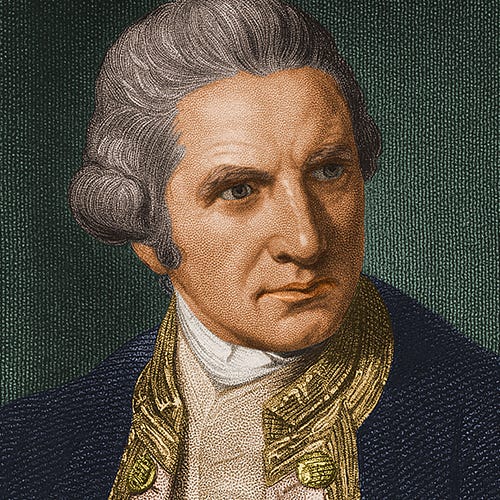
(1728-1779)
Who Was James Cook?
James Cook was a naval captain, navigator and explorer who, in 1770, charted New Zealand and the Great Barrier Reef of Australia on his ship HMB Endeavour. He later disproved the existence of Terra Australis, a fabled southern continent. Cook's voyages helped guide generations of explorers and provided the first accurate map of the Pacific.
Early Life and Career
Cook was born in Marton-in-Cleveland, Yorkshire, England, on October 27, 1728, the son of a Scottish farmhand. As a teenager, Cook did farming work alongside his father until the age of 18 when he was offered an apprenticeship by a Quaker shipowner in a small seaside village near Whitby, England. The experience proved to be fortuitous for the future naval officer and explorer, bringing him in contact with both the ocean and ships along the port.
Naval Officer, Navigator and Explorer
Cook eventually joined the British Navy and, at age 29, was promoted to ship's master. During the Seven Years War (1756-1763), he commanded a captured ship for the Royal Navy. In 1768, he took command of the first scientific expedition to the Pacific. In 1770, on his ship the HMB Endeavour, Cook charted New Zealand and the Great Barrier Reef of Australia. This area has since been credited as one of the world's most dangerous areas to navigate.
After his return to England, Cook was chosen to circumnavigate and explore Antarctica. On this voyage, he charted present-day Tonga, Easter Island, New Caledonia, the South Sandwich Islands and South Georgia, and disproved the existence of Terra Australis, a fabled southern continent. Cook named the Hawaiian Islands the Sandwich Islands after the Earl of Sandwich, also known as John Montagu.
Later Years, Death and Legacy
During all his voyages, Cook successfully fought scurvy, a deadly disease caused by vitamin deficiency, by feeding his crew a diet that included watercress, sauerkraut and orange extract. He died in a skirmish with islanders during a winter layover in Kealakekua Bay, Hawaii, on February 14, 1779.
Today, Cook's voyages are credited with helping to guide generations of explorers and with providing the first accurate map of the Pacific, and many believe that he did more to fill the map of the world than any other explorer in history.
QUICK FACTS
- Name: James Cook
- Birth Year: 1728
- Birth date: October 27, 1728
- Birth City: Marton-in-Cleveland, Yorkshire, England
- Birth Country: United Kingdom
- Gender: Male
- Best Known For: British navigator James Cook charted New Zealand and Australia's Great Barrier Reef on his ship HMB Endeavour and later disproved the existence of the fabled southern continent Terra Australis.
- War and Militaries
- Astrological Sign: Scorpio
- Death Year: 1779
- Death date: February 14, 1779
- Death State: Hawaii
- Death City: Kealakekua Bay
- Death Country: United States
We strive for accuracy and fairness. If you see something that doesn't look right, contact us !

Famous British People

Ralph Fiennes

Liam Payne’s Girlfriend Speaks Out After His Death

Daniel Day-Lewis

Maggie Smith

Alan Cumming

Olivia Colman
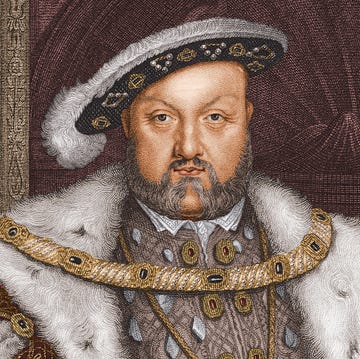
Richard III
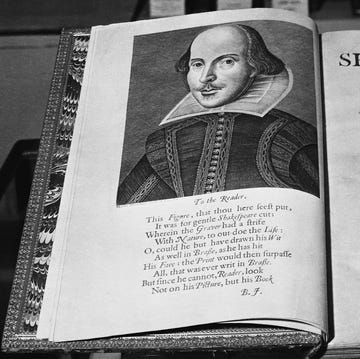
20 Shakespeare Quotes

William Shakespeare

Andy Murray

- DIGITAL MAGAZINE
MOST POPULAR
The adventures of Captain Cook!
Take a trip back in time to when captain cook sailed into sydney harbour….
All aboard, we’re about to take a trip back in time to when Captain Cook sailed into Sydney Harbour and changed the course of Australia’s history!
Ever wondered what it would like to be an explorer in the 18 th Century? Find everything you need to know about one of Europe’s most famous adventurers, Captain James Cook…
Circa 1770: English explorer and Fellow of the Royal Society, Captain James Cook (1728 – 1779)
Who was captain cook and how did he become an explorer.
James Cook was only 18 years old when he became an apprentice in the British merchant navy. By 1758 he was the master of his own ship and he went to Canada as part of his service to the navy.
Cook studied maths, charting, geography and astronomy – and his hard work paid off. His skill and knowledge of astronomy was noticed by the Royal Navy and he was appointed as the leader of an astronomical expedition that the Royal Society was organising. He was promoted to Lieutenant for what became his First Voyage.
What is Captain Cook famous for?
Captain Cook is considered one of the greatest navigators and explorers of all time and, even before his death, was celebrated as a British national hero and icon. Cook mapped the east coast of Australia – this paved the way for British settlement 18 years later. He also proved some theories to be wrong. Cook proved that there was no great ‘Southern Continent’ for example. He also collected lots of samples of flora and fauna from new places and he recorded customs and interactions with native peoples.

What was Captain Cook’s secret mission?
Captain Cook made three unbelievable voyages in his lifetime and he also had a secret mission! Let’s take a look at his three incredible voyages and discover what his top secret assignment was all about…
Captain James Cook landing in Botany Bay, New South Wales, 1770
Captain cook’s first voyage 1768-1771.
When Captain Cook set sail for the Pacific on his ship, the Endeavour, he was heading to parts of the world that were little-known and uncharted. Why was he going there you ask? One of the reasons was to make observations of the phenomenon called the Transit of Venus. It was thought that if accurate measurements were made of this event, but in very different and distant parts of the world, this would enable us to work out the distance between the sun and the earth.
However, the Royal Navy also gave Captain Cook some special instructions:
‘so soon as the Observation of the Transit of the Planet Venus shall be finished’ to proceed to search for ‘a Continent or Land of great extent, [which] may be found to the Southward’ and ‘You are also with the Consent of the Natives to take Possession of Convenient Situations in the Country in the Name of the King of Great Britain or if you find the Country uninhabited take Possession for his Majesty by setting up Proper Marks and Inscriptions, as first discoverers and possessors.’
Once Cook completed his work on the Transit of Venus, he then proceeded to New Zealand where he mapped the coast and then continued to Australia, which was already known as New Holland.
Cook and his crewmembers were the first known Europeans to see and chart the east coast of Australia in 1770. They entered Botany Bay where they made contact with Indigenous peoples. The Endeavour then continued North, through Torres Strait, over the Indian Ocean and round Africa back to England!
Captain Cook had not found the Southern Continent that the Royal Navy was looking for – somewhere other than Australia.
Captain Cook’ s Second Voyage 1772-1775
The next year, Captain Cook set sail again on the same journey. He was still in search of the mysterious Southern Continent the Royal Navy was keen to chart. He travelled through vast areas of the Pacific Ocean and even into the Antarctic Circle – there was no other Southern Continent. On this trip, he had circumnavigated the world for a second time. Plus, he also put many new, previously unknown islands on the European maps and discovered new societies in the Pacific.
Captain Cook arriving at Queen Charlotte’s Sound, New Zealand, 1777
Captain cook’s third and final voyage 1776-1780.
Cook had a new secret agenda: find what was called the Northwest Passage. This was a possible shortcut through the Arctic Ocean that could connect Europe, Asia and America. If he found it, this would be a quicker for trade.
Cook explored the northern Pacific and mapped extensive parts of North America and Alaska before being turned back by ice. Cook stopped over in Hawaii to restock his supplies before continuing his exploring. This is where his adventures end. Captain Cook was killed at Kealakekua Bay, on 14 February 1779, in a confrontation with the Indigenous people of Hawaii.
LEAVE A COMMENT
Your comment will be checked and approved shortly.
WELL DONE, YOUR COMMENT HAS BEEN ADDED!
coooooooooooooooooooooool
This is cool
It was epic
HI FELLOW HUMANS
I love this
Very informative
Great navy man navigator,seaman,explorer
lol i love your work
i love llearning
I am a big fan of james cook
Bananas are delicious
CUSTOMIZE YOUR AVATAR
More like general history.

The life of Anne Frank
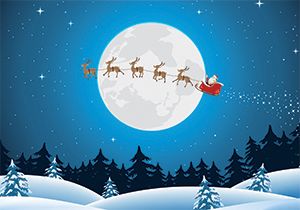
10 facts about Christmas!
Satellite images hint at lost mayan city.

The life of Nelson Mandela

Sign up to our newsletter
Get uplifting news, exclusive offers, inspiring stories and activities to help you and your family explore and learn delivered straight to your inbox.
You will receive our UK newsletter. Change region
WHERE DO YOU LIVE?
COUNTRY * Australia Ireland New Zealand United Kingdom Other
By entering your email address you agree to our Terms of Use and Privacy Policy and will receive emails from us about news, offers, activities and partner offers.
You're all signed up! Back to subscription site
Type whatever you want to search
More Results

You’re leaving natgeokids.com to visit another website!
Ask a parent or guardian to check it out first and remember to stay safe online.

You're leaving our kids' pages to visit a page for grown-ups!
Be sure to check if your parent or guardian is okay with this first.
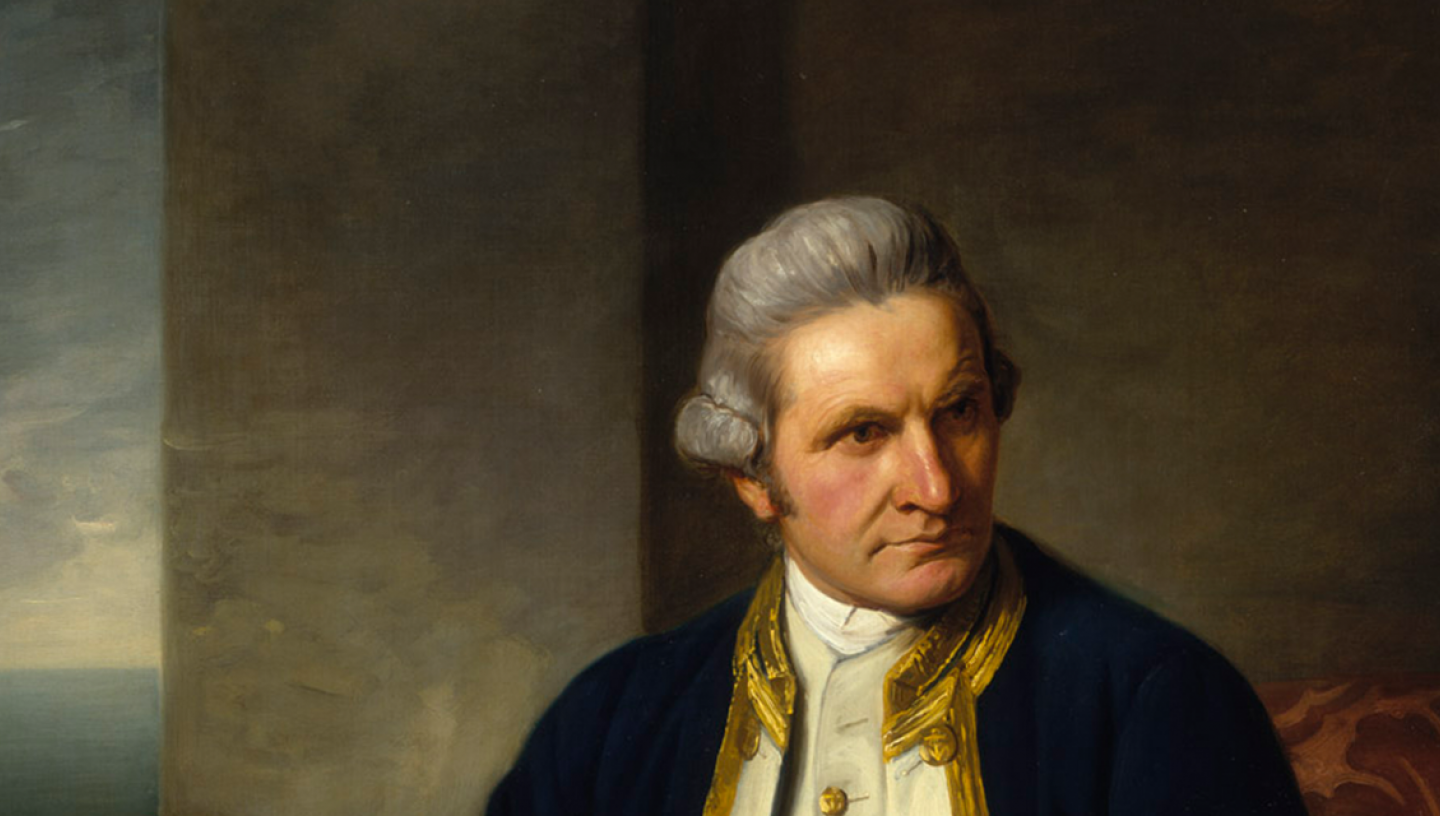
Captain James Cook timeline
Follow the key events in Captain Cook’s life of adventure from a simple start to global fame and a grisly death.
Captain Cook rose from humble beginnings in Yorkshire to become a national hero. To his contemporaries in the Navy he was renowned for his precise surveying, innovations in keeping his crew healthy and early championing of Harrison’s solution to the problem of longitude.
- 1728: Born in Marton in Yorkshire.
- 1746: Accepted as a sea apprentice by John Walker, head of a shipping firm engaged in the East Coast coal trade.
- 1755: Volunteers for the Royal Navy.
- July 1757: Promoted master of the Solebay, later the Pembroke .
- 1763–1766: Surveys the coast of Newfoundland, observes an eclipse.
- Summer 1768: Sails for Tahiti on HMS Endeavour to record observations of the Transit of Venus.
- June 1769: Opens secret instructions from the Admiralty – he is to sail south in search for Terra Australis Incognita and explore the coast of New Zealand.
- Autumn 1769: Sails around New Zealand, expertly charting the coast and proving that it is not part of a great southern continent.
- Spring 1770: Lands in Botany Bay encountering the first aborigines.
- October 1770: The Endeavour lands at Batavia for a much-needed refit. Many of Cook's men suffer and die from malaria and dysentery.
- July 1772: Cook, now a commander, sets out with two colliers, Resolution and Adventure.
- January 1773: Cook becomes the first navigator to cross the Antarctic Circle.
- Summer 1773: The crews return to Tahiti and then visit Tonga. When they turn south to explore the Antarctic once more, the two vessels lose touch and Furneaux, in command of Adventure , leaves New Zealand and heads home.
- January 1774: Cook's travels in the South Pacific have proved that there is no habitable continent. Instead of returning home, he continues to explore.
- Spring 1774: Cook explores and accurately charts Easter Island, the Marquesas Islands and the Friendly Isles and others.
- November 1774: Resolution heads for home.
- Summer 1776: Cook sets off again with the Resolution and Discovery in search of the North-West passage.
- December 1776: After a spell at Tahiti, Cook sets out for the Sandwich Islands (named in honour of the First Lord of the Admiralty, the Earl of Sandwich).
- Summer 1778: The two ships head north, charting the southern coast of Alaska. An impenetrable ice wall forces them back to Hawaii. Initially, Cook is greeted as a god but relations between the sailors and the islanders soon deteriorate.
- February 1779: Cook and his men depart but are forced back two days later when the Resolution springs her foremast. Relations are again strained and after a series of thefts Cook goes ashore. He is attacked, overpowered and stabbed to death.
- 1779–October 1780: Clerke, previously in charge of the Discovery , now takes command but dies of consumption six months later. Lieutenant Gore of the Resolution eventually brings the ships home.
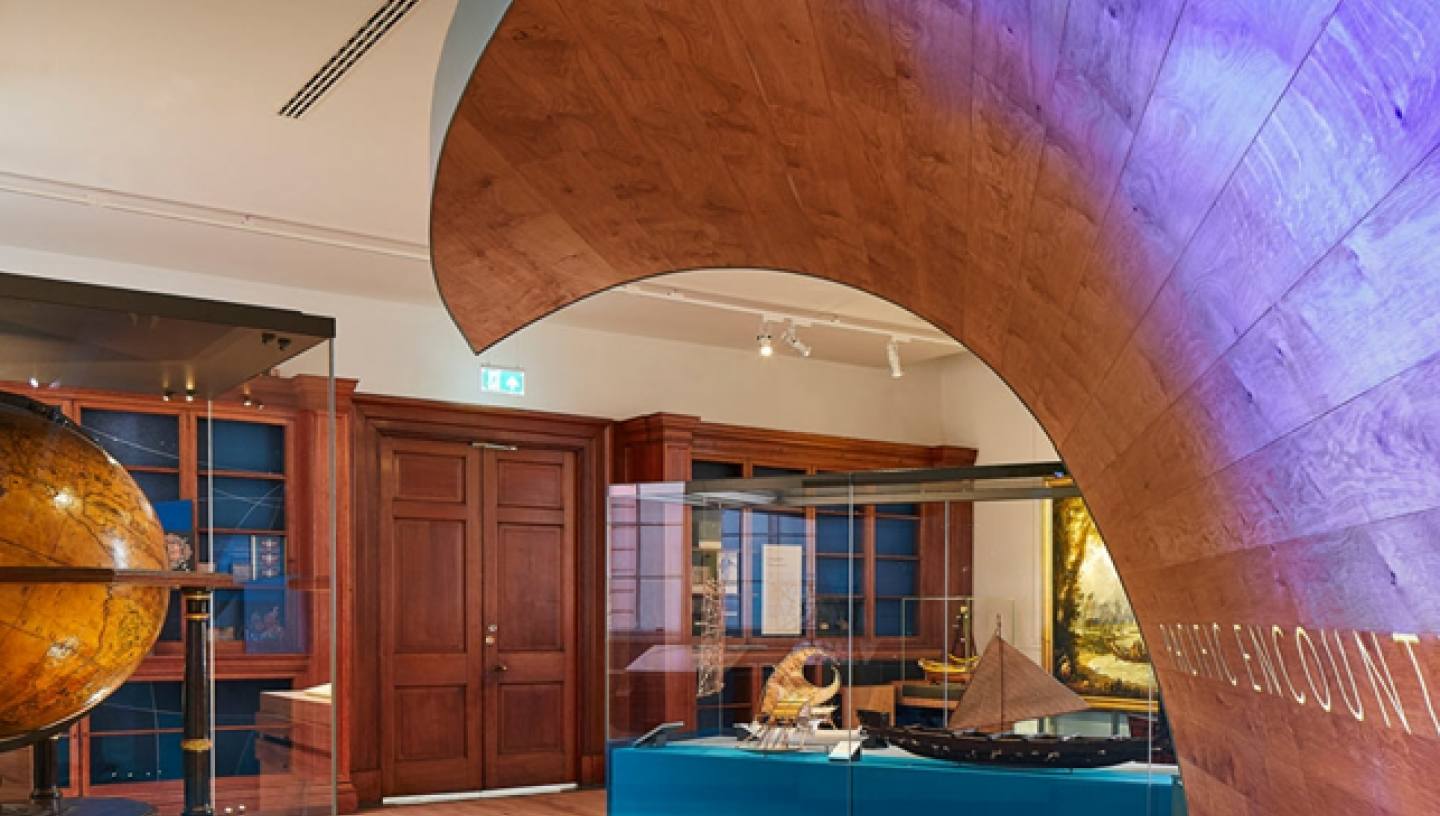
Pacific Encounters

- Biographies & Memoirs

Enjoy fast, free delivery, exclusive deals, and award-winning movies & TV shows with Prime Try Prime and start saving today with fast, free delivery
Amazon Prime includes:
Fast, FREE Delivery is available to Prime members. To join, select "Try Amazon Prime and start saving today with Fast, FREE Delivery" below the Add to Cart button.
- Cardmembers earn 5% Back at Amazon.com with a Prime Credit Card.
- Unlimited Free Two-Day Delivery
- Streaming of thousands of movies and TV shows with limited ads on Prime Video.
- A Kindle book to borrow for free each month - with no due dates
- Listen to over 2 million songs and hundreds of playlists
- Unlimited photo storage with anywhere access
Important: Your credit card will NOT be charged when you start your free trial or if you cancel during the trial period. If you're happy with Amazon Prime, do nothing. At the end of the free trial, your membership will automatically upgrade to a monthly membership.

Return this item for free
We offer easy, convenient returns with at least one free return option: no shipping charges. All returns must comply with our returns policy.
- Go to your orders and start the return
- Select your preferred free shipping option
- Drop off and leave!

Download the free Kindle app and start reading Kindle books instantly on your smartphone, tablet, or computer - no Kindle device required .
Read instantly on your browser with Kindle for Web.
Using your mobile phone camera - scan the code below and download the Kindle app.

Image Unavailable

- To view this video download Flash Player
Follow the author

The Wide Wide Sea: Imperial Ambition, First Contact and the Fateful Final Voyage of Captain James Cook Hardcover – April 9, 2024

Purchase options and add-ons
- Print length 432 pages
- Language English
- Publisher Doubleday
- Publication date April 9, 2024
- Dimensions 6.43 x 1.52 x 9.53 inches
- ISBN-10 0385544766
- ISBN-13 978-0385544764
- See all details

Frequently bought together

Customers who viewed this item also viewed

From the Publisher

Editorial Reviews
About the author, product details.
- Publisher : Doubleday; First Edition (April 9, 2024)
- Language : English
- Hardcover : 432 pages
- ISBN-10 : 0385544766
- ISBN-13 : 978-0385544764
- Item Weight : 1.6 pounds
- Dimensions : 6.43 x 1.52 x 9.53 inches
- #2 in Arctic & Antarctica History
- #3 in Maritime History & Piracy (Books)
- #4 in Traveler & Explorer Biographies
About the author
Hampton sides.
HAMPTON SIDES is the author of In the Kingdom of Ice, Ghost Soldiers, Blood and Thunder, Hellhound On His Trail, and other bestselling works of narrative history and literary non-fiction. His newest work, On Desperate Ground, will be published by Doubleday this October. Hampton is an editor-at-large for Outside magazine. His magazine work, collected in numerous published anthologies, has been twice named a Finalist for the National Magazine Awards in feature writing. A recent fellow of the Santa Fe Institute, he teaches literary journalism and narrative history at Colorado College. A native of Memphis with a BA in history from Yale, he lives in Santa Fe with his wife Anne.
Customer reviews
- 5 star 4 star 3 star 2 star 1 star 5 star 79% 16% 3% 1% 1% 79%
- 5 star 4 star 3 star 2 star 1 star 4 star 79% 16% 3% 1% 1% 16%
- 5 star 4 star 3 star 2 star 1 star 3 star 79% 16% 3% 1% 1% 3%
- 5 star 4 star 3 star 2 star 1 star 2 star 79% 16% 3% 1% 1% 1%
- 5 star 4 star 3 star 2 star 1 star 1 star 79% 16% 3% 1% 1% 1%
Customer Reviews, including Product Star Ratings help customers to learn more about the product and decide whether it is the right product for them.
To calculate the overall star rating and percentage breakdown by star, we don’t use a simple average. Instead, our system considers things like how recent a review is and if the reviewer bought the item on Amazon. It also analyzed reviews to verify trustworthiness.
Customers say
Customers find the book well-written, brilliantly told, and a great read. They describe the story as interesting, detailed, and a great historical adventure. Readers appreciate the insightful and factual writings.
AI-generated from the text of customer reviews
Customers find the book well-written and packed with information on Captain Cook. They say it's brilliantly told and holds their attention. Readers also mention the writing style is smooth and engaging.
"...Truly a page turner, I could not put it down. Full of detail and the author brings Captain Cook, his officers and men to life...." Read more
"...and logbooks of the crewmembers themselves, so that the reader gets a very good sense of what things were like during this voyage and what the crew..." Read more
"...The book reads like a novel, with good character development, great detail , and literary descriptions more common in fiction." Read more
"Loved this page-turner! Very well written and an exciting adventure...." Read more
Readers find the story interesting, detailed, and well-researched. They also say it's a great historical adventure, the best narrative non-fiction book they have ever read. Readers mention the author does a marvelous job making history come alive and highlighting dangers.
" Great historical review . Factual with detail." Read more
"... Story telling at its finest , but it is all true. Truly a page turner, I could not put it down...." Read more
"... Highly recommended for history buffs ." Read more
"...The author did a marvelous job making history come alive and highlighting the dangers and extremes these explorers faced." Read more
Customers find the book's research quality excellent. They say it's brilliant, insightful, and full of fascinating information regarding Capt. James Cook. Readers also appreciate the superb notes, index, bibliographies, and illustration credits. They mention the book provides a better account of his death and is packed with information on Cook.
"Great historical review. Factual with detail ." Read more
"...Story telling at its finest, but it is all true . Truly a page turner, I could not put it down...." Read more
"...(and enlightening ) reading experience. Highly recommended for history buffs." Read more
"...For modern day readers this book is a fine source for discovering what the man did on his final voyage." Read more
Customers find the book hard to put down and easy to follow. They also say it's well-written.
"...Well researched and meticulously written. A page turner. Hard to put down !" Read more
"This book is hard to put down . There are so many interesting things to learn about that I was unaware of. Well worth the read." Read more
"This is great stuff. Couldn’t put it down ." Read more
"Well written and. easy to follow ..." Read more
- Sort reviews by Top reviews Most recent Top reviews
Top reviews from the United States
There was a problem filtering reviews right now. please try again later..
Top reviews from other countries
- Amazon Newsletter
- About Amazon
- Accessibility
- Sustainability
- Press Center
- Investor Relations
- Amazon Devices
- Amazon Science
- Sell on Amazon
- Sell apps on Amazon
- Supply to Amazon
- Protect & Build Your Brand
- Become an Affiliate
- Become a Delivery Driver
- Start a Package Delivery Business
- Advertise Your Products
- Self-Publish with Us
- Become an Amazon Hub Partner
- › See More Ways to Make Money
- Amazon Visa
- Amazon Store Card
- Amazon Secured Card
- Amazon Business Card
- Shop with Points
- Credit Card Marketplace
- Reload Your Balance
- Amazon Currency Converter
- Your Account
- Your Orders
- Shipping Rates & Policies
- Amazon Prime
- Returns & Replacements
- Manage Your Content and Devices
- Recalls and Product Safety Alerts
- Registry & Gift List
- Conditions of Use
- Privacy Notice
- Consumer Health Data Privacy Disclosure
- Your Ads Privacy Choices
Voyages of James Cook

- 1.2 Royal Navy and First Voyage
- 1.3 Second Voyage
- 1.4 Third Voyage
- 2.1 England
- 2.2 Australia
- 2.3 New Zealand
<a href=\"https://tools.wmflabs.org/wikivoyage/w/poi2gpx.php?print=gpx&lang=en&name=Voyages_of_James_Cook\" title=\"Download GPX file for this article\" data-parsoid=\"{}\"><img alt=\"Download GPX file for this article\" resource=\"./File:GPX_Document_rev3-20x20.png\" src=\"//upload.wikimedia.org/wikipedia/commons/f/f7/GPX_Document_rev3-20x20.png\" decoding=\"async\" data-file-width=\"20\" data-file-height=\"20\" data-file-type=\"bitmap\" height=\"20\" width=\"20\" class=\"mw-file-element\" data-parsoid='{\"a\":{\"resource\":\"./File:GPX_Document_rev3-20x20.png\",\"height\":\"20\",\"width\":\"20\"},\"sa\":{\"resource\":\"File:GPX Document rev3-20x20.png\"}}'/></a></span>"}'/>

Captain James Cook was a British explorer, navigator, cartographer, and captain in the Royal Navy. Sailing both eastwards and westwards around the world, Cook and his crews explored parts of the world no European had sailed before, and like Magellan 258 years earlier, his life ended in a battle on the shores of the Pacific.

Born in 1728 in the village of Marton in North Yorkshire, when he was 16 (1745) Cook moved to the fishing village of Staithes, to be apprenticed as a shop boy. After 18 months, not proving suited for shop work, Cook travelled to the nearby port town of Whitby and was introduced to John and Henry Walker, who were Quakers, and prominent local ship-owners in the coal trade. Their house is now the Captain Cook Memorial Museum. Cook was taken on as a merchant navy apprentice in their small fleet of vessels, plying coal along the English coast. His first assignment was aboard the collier Freelove , and he spent several years on this and various other coasters, sailing between the Tyne and London . As part of his apprenticeship, Cook applied himself to the study of algebra, geometry, trigonometry, navigation and astronomy—all skills he would need one day to command his own ship.
Royal Navy and First Voyage
He joined the Royal Navy in 1755, and saw action in the Seven Years' War (1756 - 1763), surveying and mapping much of the entrance to the Saint Lawrence River during the siege of Quebec City , which fell to the British on 13 September 1759. This brought him to the attention of the Admiralty and Royal Society, which led to his commission in 1766 as commander of HM Bark Endeavour for a scientific expedition, his first voyage (1768–1771) to the Pacific Ocean, to observe and record the 1769 transit of Venus across the Sun from Tahiti . This data, when combined with observations from other places, would help to determine the distance of the Earth from the Sun. Cook, at age 39, was promoted to lieutenant to grant him sufficient status to take the command. For its part, the Royal Society agreed that Cook would receive a one hundred guinea gratuity (£105) in addition to his Naval pay.
The expedition departed England on 26 August 1768, rounded Cape Horn and continued westward across the Pacific, arriving at Tahiti on 13 April 1769, where the observations of the Venus Transit were made, proving not as conclusive or accurate as had been hoped. Once these were completed, Cook opened the sealed orders from the Admiralty for the second part of his voyage: to search the south Pacific for signs of the postulated rich southern continent of Terra Australis . Cook then made the first recorded circumnavigation of New Zealand . Having aboard Tupaia, an exceptionally accomplished Tahitian aristocrat and priest, who helped guide him through the Polynesian islands, he mapped the complete coastline, making only some minor errors. Next, he sailed west for the first recorded European contact and waypoint naming on the eastern coastline of Australia, famously starting on 29 April 1770 with Botany Bay , named after the many first unique specimens retrieved by the botanists Joseph Banks and Daniel Solander.

On 22 August 1770, Endeavour reached the northernmost tip of the coast and, without disembarking, Cook named it Cape York . Leaving the east coast, Endeavour turned west and nursed her way through the dangerously shallow waters of Torres Strait. Searching for a vantage point, Cook saw a steep hill on a nearby island, from the top of which he hoped to see "a passage into the Indian Seas". He disembarked, named the island "Possession Island", and claimed the entire coastline that he had just explored for the British crown , naming it New South Wales . He returned to England via Batavia , where many in his crew succumbed to malaria, the Cape of Good Hope , the island of Saint Helena on 30 April 1771, and anchored at The Downs on 12 July 1771. Cook's journals were published upon his return, and he became something of a hero among the scientific community. However, the aristocratic botanist Joseph Banks was a greater hero among the general public, and even attempted to take command of Cook's second voyage, but removed himself from it before it began.
Second Voyage
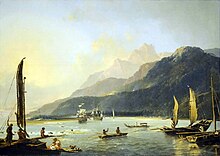
From 1772 to 1775, on the ships HMS Resolution and HMS Adventure , commissioned by the British government with advice from the Royal Society, he went to circumnavigate the globe as far south as possible to finally determine whether there was any great Terra Australis. On 17 January 1773, Resolution was the first ship to venture south of the Antarctic Circle, which she did twice more on this voyage. The final such crossing, on 3 February 1774, was to be the most southerly penetration, reaching latitude 71°10′ S at longitude 106°54′ W. Cook almost encountered the mainland of Antarctica, but turned towards Tahiti to resupply his ship. He then resumed his southward course in a second fruitless attempt to find the supposed continent. On this leg of the voyage, he brought a young Tahitian named Omai, who proved to be somewhat less knowledgeable about the Pacific than Tupaia had been on the first voyage. On his return voyage to New Zealand in 1774, Cook landed at the Friendly Islands , Easter Island , Norfolk Island , New Caledonia , and Vanuatu . Before returning to England, Cook made a final sweep across the South Atlantic from Cape Horn and surveyed, mapped, and took possession for Britain of South Georgia , which had been explored by the English merchant Anthony de la Roché in 1675. Cook also discovered and named Clerke Rocks and the South Sandwich Islands ("Sandwich Land"). He then turned north to South Africa , and from there continued back to England. His reports upon his return home put to rest the popular myth of Terra Australis. Cook's second voyage marked a successful employment of Larcum Kendall's K1 copy of John Harrison's H4 marine chronometer, which enabled Cook to calculate his longitude with much greater accuracy. Cook's log was full of praise for this chronometer, which he used to make charts of the southern Pacific Ocean that were so remarkably accurate that copies of them were still in use in the mid-20th century.

Third Voyage
His third and final voyage (12 July 1776 – 4 October 1780)'s ostensible purpose was to return his second voyage's young Tahitian passenger Omai to his homeland, but this was but a cover for the Admiralty's plan to send Cook on a voyage to discover the Northwest Passage. HMS Resolution , to be commanded by Cook, and HMS Discovery , commanded by Charles Clerke, were prepared for the voyage which started from Plymouth in 1776. After dropping Omai at Tahiti, Cook travelled north and in 1778 became the first European to begin formal contact with the Hawaiian Islands, making landfall in January 1778 at Waimea harbour and Kauai afterwards. Cook named the archipelago the "Sandwich Islands" after the fourth Earl of Sandwich, the acting First Lord of the Admiralty.
The expedition then sailed west to the Siberian coast, and then southeast, back through the Bering Strait. He made a few other attempts to sail through it, and became increasingly frustrated on this voyage, perhaps suffering from a stomach ailment; it has been speculated that this led to irrational behaviour towards his crew, such as forcing them to eat walrus meat, which they found inedible. From the Bering Strait, the crews went south to Unalaska in the Aleutians, where Cook put in on 2 October to again re-caulk the ship's leaking timbers. They then headed back to the Sandwich Islands. Cook was killed at Kealakekua Bay on 14 February 1779, in a conflict with locals. The expedition returned home, reaching England in October 1780.
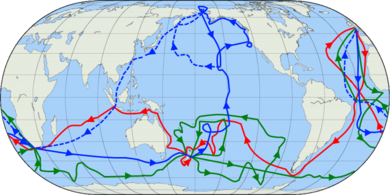
Some ascribe Cook's success to his observation that certain foods — among them lime — prevented scurvy. The term "limey" for an Englishman dates to that era. However, the discovery of the connection between certain foods and the prevention of scurvy was made multiple times by multiple people and forgotten almost as often as discovered. He surely mapped lands and oceans in greater detail and on a scale not previously charted by Western explorers, surveying and naming features, and recorded islands and coastlines on European maps for the first time. He displayed a combination of seamanship, superior surveying and cartographic skills, physical courage, and an ability to lead men in adverse conditions.

There are over 100 memorials to Cook around the world. We only list some of these here, the Captain Cook Society have longer lists .
- HM Bark Endeavour in Whitby is a 40%-sized replica of the Endeavour used by Cook on his first expedition of 1768-71. In summer they potter round the bay for 30 min.

New Zealand
- Look at the change in your pocket, as HM Bark Endeavour is shown on most 50c coins.
- -41.28 174.51 18 Cook Strait . Separating the North and South islands, overland travel between them can be made onboard frequent Cook Strait ferries . The first European to sail here was Abel Tasman, but James Cook established for Europeans that this was a strait enabling ships to sail between the Tasman Sea and the main Pacific Ocean. ( updated Apr 2024 )
- 19.481306 -155.933444 21 Monument to Cook's Death , Kealakekua Bay in Big Island . The attempted kidnapping of Kalaniʻōpuʻu, the ruling chief of the island of Hawaii, to hold him hostage for a stolen lifeboat was the fatal error of Cook's final voyage, and ultimately led to his death. A large white stone monument was commissioned by a local princess on the north shore of the bay in 1874, enclosed by a chain supported by four cannon from the ship HMS Fantome with their breaches embedded in the rock in 1876, and was deeded to the United Kingdom in 1877. It marks the approximate location of Cook's death. The Cook monument is unreachable by road; this remote location is accessible only by water or an hour-long hike along a moderately steep trail. Many visitors have rented kayaks in the town of Captain Cook and paddled across the bay, about 1.5 miles (2.4 km) from its southern end. State conservation regulations prohibit kayaks, stand-up paddleboards, surfboards, and bodyboards from entering the bay unless part of a tour with a licensed local operator. ( updated May 2020 )
- British Empire
- Voyages of George Vancouver
- Voyages of John Franklin
- Voyages of Matthew Flinders
- Previous Featured travel topics
- Articles without Wikipedia links (via Wikidata)
- Has custom banner
- Has map markers
- Guide topics
- Guide articles
- Age of Discovery
- Topic articles
- Has Geo parameter
- Articles with no Wikidata coords
- Pages using the Kartographer extension
Navigation menu

IMAGES
VIDEO
COMMENTS
Captain James Cook FRS (7 November [O.S. 27 October] 1728 - 14 February 1779) was a British explorer, cartographer and naval officer famous for his three voyages between 1768 and 1779 in the Pacific Ocean and to New Zealand and Australia in particular. He made detailed maps of Newfoundland prior to making three voyages to the Pacific, during which he achieved the first recorded European ...
James Cook: Pacific voyages James Cook's three Pacific voyages. James Cook (born October 27, 1728, Marton-in-Cleveland, Yorkshire, England—died February 14, 1779, Kealakekua Bay, Hawaii) was a British naval captain, navigator, and explorer who sailed the seaways and coasts of Canada (1759 and 1763-67) and conducted three expeditions to the ...
Voyages Principal Voyage James Cook sailed from Deptford, England on July 30, 1768 on his ship Endeavour with a crew of 84 men. 3 The crew included several scientists and artists to record their observations and discoveries during the journey. They made many small stops at different locations along the way. In January 1769, they rounded the tip ...
The route of Cook's first voyage Later state of map originally published 1748. Revised to show the discoveries of Cook's first voyage (1768-1771) and discoveries in Bering Strait. The first voyage of James Cook was a combined Royal Navy and Royal Society expedition to the south Pacific Ocean aboard HMS Endeavour, from 1768 to 1771.It was the first of three Pacific voyages of which James Cook ...
First Voyage of Captain James Cook. (1768 - 1771) James Cook's first voyage circumnavigated the globe in the ship Endeavour, giving the botanists Joseph Banks and Daniel Solander the opportunity to collect plants from previously unexplored habitats. Although the Endeavour voyage was officially a journey to Tahiti to observe the 1769 transit ...
James Cook's voyages took him across vast stretches of the Pacific Ocean, during which he explored and mapped numerous islands and archipelagos. His first voyage, as mentioned earlier, involved sailing through the Pacific to reach New Zealand and Australia. Cook's second voyage, from 1772 to 1775, focused on further exploration of the Pacific.
The route of Cook's third voyage shown in red; blue shows the return route after his death. James Cook's third and final voyage (12 July 1776 - 4 October 1780) took the route from Plymouth via Tenerife and Cape Town to New Zealand and the Hawaiian Islands, and along the North American coast to the Bering Strait.. Its ostensible purpose was to return Omai, a young man from Raiatea, to his ...
Captain James Cook set out on a voyage across the Pacific 250 years ago, seemingly on a scientific voyage. But he carried secret instructions from the Navy with him as well. Wikimedia Commons. It ...
James Cook and his voyages. The son of a farm labourer, James Cook (1728-1779) was born at Marton in Yorkshire. In 1747 he was apprenticed to James Walker, a shipowner and master mariner of Whitby, and for several years sailed in colliers in the North Sea, English Channel, Irish Sea and Baltic Sea. In 1755 he volunteered for service in the ...
Cook's Voyages Map - Ages of Exploration. Cook's Voyages Map. Quick Facts: The map shows the three voyages of Captain James Cook. The first voyage is in red, the second voyage is in green and the third voyage is in blue. Following Cook's death, the route his crew took is in the blue dashed line. (Credit: Andre Engels)
His Majesty's Bark Endeavour. Captain Cook's Ship on His First Global Circumnavigation, 1768-1771. Launched in 1764 as the merchant collier Earl of Pembroke designed to carry coal, the ship was purchased in 1768 by the Royal Navy for £2,300, renamed Endeavour, and refitted for Cook's expedition.
James Cook was a naval captain, navigator and explorer who, in 1770, charted New Zealand and the Great Barrier Reef of Australia on his ship HMB Endeavour. ... Cook's voyages helped guide ...
Captain James Cook landing in Botany Bay, New South Wales, 1770 ... Captain Cook's Second Voyage 1772-1775. The next year, Captain Cook set sail again on the same journey. He was still in search of the mysterious Southern Continent the Royal Navy was keen to chart. He travelled through vast areas of the Pacific Ocean and even into the ...
October 1770: The Endeavour lands at Batavia for a much-needed refit. Many of Cook's men suffer and die from malaria and dysentery. July 1772: Cook, now a commander, sets out with two colliers, Resolution and Adventure. January 1773: Cook becomes the first navigator to cross the Antarctic Circle. Summer 1773: The crews return to Tahiti and then ...
The second voyage of James Cook, from 1772 to 1775, commissioned by the British government with advice from the Royal Society, [1] was designed to circumnavigate the globe as far south as possible to finally determine whether there was any great southern landmass, or Terra Australis.On his first voyage, Cook had demonstrated by circumnavigating New Zealand that it was not attached to a larger ...
NEW YORK TIMES BESTSELLER • NAMED A BEST BOOK OF THE YEAR SO FAR FOR 2024 BY THE NEW YORK TIMES BOOK REVIEW • A "thrilling and superbly crafted" (The Wall Street Journal) account of the most momentous voyage of the Age of Exploration, which culminated in Captain James Cook's death in Hawaii, and left a complex and controversial legacy still debated to this day.
Cook was killed at Kealakekua Bay on 14 February 1779, in a conflict with locals. The expedition returned home, reaching England in October 1780. The routes of Captain James Cook's voyages. The first voyage is shown in red, second voyage in green, and third voyage in blue. The route of Cook's crew following his death is shown as a dashed blue line.
The twenty-fifth of August 2018 marks the 250th anniversary of the departure of the Endeavour from Plymouth, England, and the first of three voyages by James Co...